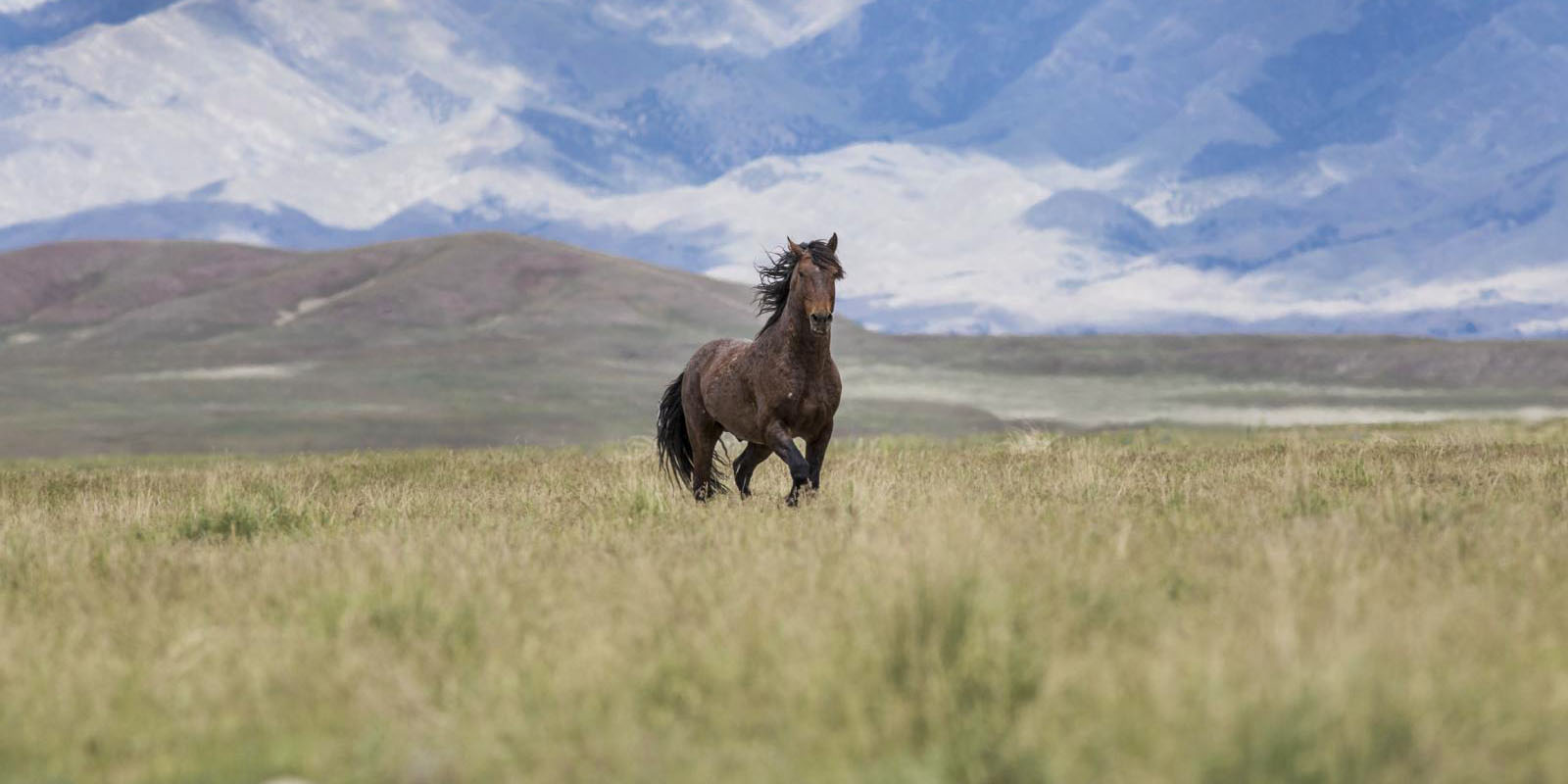The Devil’s Garden Wild Horse Territory is home to California’s largest wild horse herd. It is made up of 258,000 acres outside of Alturas, California. These mustangs fall under the management of the U.S. Forest Service, not the Bureau of Land Management.
The $599,500 contract for the helicopter and bait trap operation was awarded to Cattoor Livestock Roundup, Inc. Between 2020 and 2022, Cattoor was awarded three other contracts for roundups totaling $1,896,301 as well as over $100,000 in contracts to transport captured Devil’s Garden horses to distribution sites across the country.
Based on Freedom of Information Act records, AWHC estimates that the cost of each roundup and removal, which includes not only the contractor but also USFS staffing and care of the captured horses at the agency’s Double Devil Wild Horse Corrals in Alturas, CA , exceeds $1 million. Since 2016, 3,001 wild horses have been removed from the Territory. After this year’s operation, that number could rise to 3,500 horses.
This spring’s population census estimated that there were 1,339 adult horses on and around the Territory. The 2022 spring census estimated that there were 1,205 adult horses. Therefore, despite removing 389 horses in last fall’s roundup, the number of horses increased by 134 horses between 2022 and 2023.
The MNF press release also stated that “The Modoc National Forest remains committed to managing wild free-roaming horses in a manner that is designed to achieve and maintain a thriving natural ecological balance and multiple-use relationship on public lands.”
Currently, privately owned livestock that includes about 3,000 cow/calf pairs and 2,000 sheep are permitted to graze on the Territory for four to six months, spring through fall. The 2013 Wild Horse Territory Management Plan was developed through a partnership with the MNF and the Modoc County Farm Bureau.
Public observation of the roundup and removal will be offered seven days a week. However, “due to the confined nature of the viewing blinds,” the USFS is limiting the number of observers to six a day.
ROUNDUP REPORT
October 8: 2 wild horses captured. A total of 238 horses have been captured to date.
October 7: 5 wild horses captured.
October 6: 7 wild horses captured.
October 5: 7 wild horses captured. A total of 224 horses have been captured to date.
October 4: No wild horses captured.
October 3: 4 wild horses captured.
October 2: 13 wild horses captured.
October 1: 2 wild horses captured. A total of 200 horses have been removed.
September 30: No information provided.
September 29: 29 wild horses captured.
September 28: 0 wild horses captured.
September 27: 16 wild horses captured.
September 26: No wild horses captured.
September 25: No information provided.
September 24: 10 wild horses captured.
September 23: 6 wild horses captured.
September 22: 6 horses and 1 mule captured.
September 21: 10 wild horses and 1 mule captured, with 2 deaths. September 20: No wild horses captured.
September 19: 8 horses captured.
September 18: 8 horses captured.
September 17: 8 horses captured.
I met BLM personnel at 6:30 a.m. at the Modoc National Forest Service office in Alturas CA.
I followed them to the observer location (approx 47 miles). There is one other observer beside me today. We arrived at the observation area around 7: 45 a.m.
The first run came in at 10:45 am the temp was 72° with winds approximately 1mph. Approximately 7-8 horses came in. I cannot view the openings of the wings of the trap only as they come up into the catch pen. The trap is nested under the trees with a wrangler horse tied in front obstructing the view. The first run of horses was taken to the corrals. The helicopter went to fuel and headed back out the direction he had come in from. From the position I was sitting in, I could not see any fencing where they were bringing the horses in. All vehicles appear to be maintained and in working order.
At 11:19 the helicopter headed back towards us and landed. At 11:25 they called it a day.
After the conclusion of the roundup, we were able to visit the foal pen today but we're advised we could not get close to the pens. I met Forest Service personnel at 2:00 p.m. at the corals to view the horses who were captured today. We were able to view the foal pens but were instructed not to get too close to the rails.
September 16, 2023: 12 Horse Captured
I observed a total of 12 captured horses at the trap site, consisting of 4 stallions and 8 mares, along with 2 stallions at the bait trap. So far, a total of 92 wild horses have been captured during the operation.
The day started at 6:00 am when I met with Forest Service personnel at their office. We then traveled for approximately an hour to reach trap site 26. Once there, we were directed to our observation site, which was a short hike away from our vehicles.
The observation site was approximately a quarter of a mile away from the trap. The trap itself was positioned near some trees, which unfortunately obstructed my view of the trap's wings. Additionally, my view of the trap was partially blocked due to being placed behind a tree.
There were two runs throughout the day, with a few hours in between each run. The day concluded at 2:30 p.m., and at 4:00 p.m., I joined the staff at the corrals for viewing.
Before entering, I was instructed to perform a foot bath. Unfortunately, I was still unable to access the other side to view the mares with foals and the weaned foals. The trap will remain at the same location tomorrow.
September 15, 2023: 7 Horses Captured
I had a meeting with the Forest Service PR at 6:30 a.m. at the Modoc National Forest Service building in Alturas, CA. From there, we traveled approximately 25 miles up to Duncan Reservoir. On our way to the observation area, we saw two wild horses casually eating. We also passed through the area where the trap was being set up. There was no fencing or barbed wire in that area, but jute was being hung on fence poles that the contractors had placed in the ground.
After parking, we hiked a short distance up to the observation area, where we sat under some trees not too far from the trap itself. The first run of horses came in around 8:00 a.m., and it was the same two horses we had seen earlier. At 9:45 a.m., three more horses came in, including a strong-willed stallion who didn't want to enter the trap. It took about 30 minutes to get him into the trap. At 11:54 am, a mare and a foal/colt were brought in, and that concluded the day's operations.
Later, I met with Forest Service personnel at the Devils Garden Corals. The horses that were brought in today were marked with the number 48 for processing purposes. Unfortunately, I wasn't allowed to view the mares and foals today. The horses had body scores of around 5-6 and were in excellent condition. So far, 78 horses have been gathered by helicopter, and none have been gathered at the bait and trap location. Thankfully, there have been no deaths during this operation. Tomorrow, we will be heading to a new trap area.
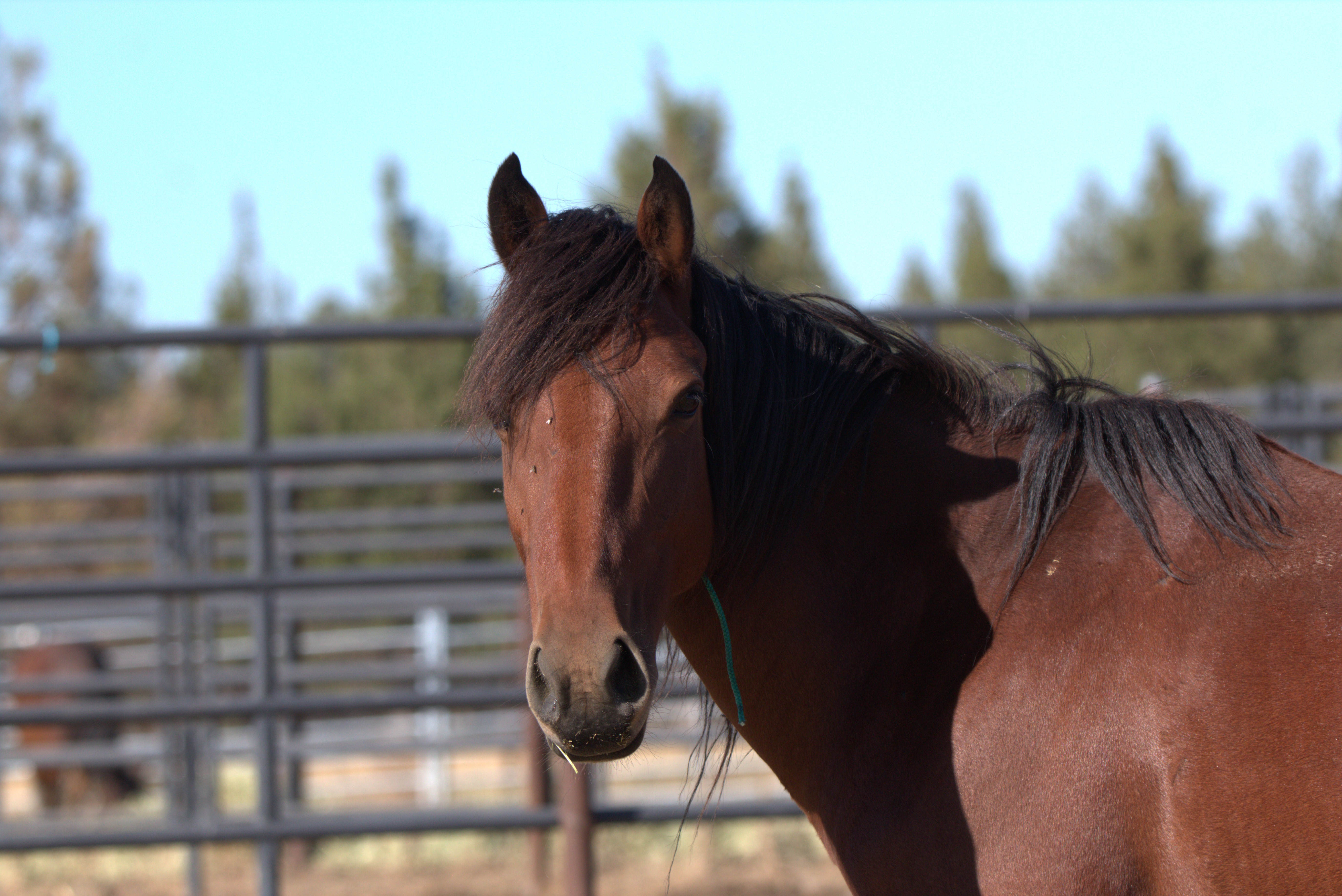
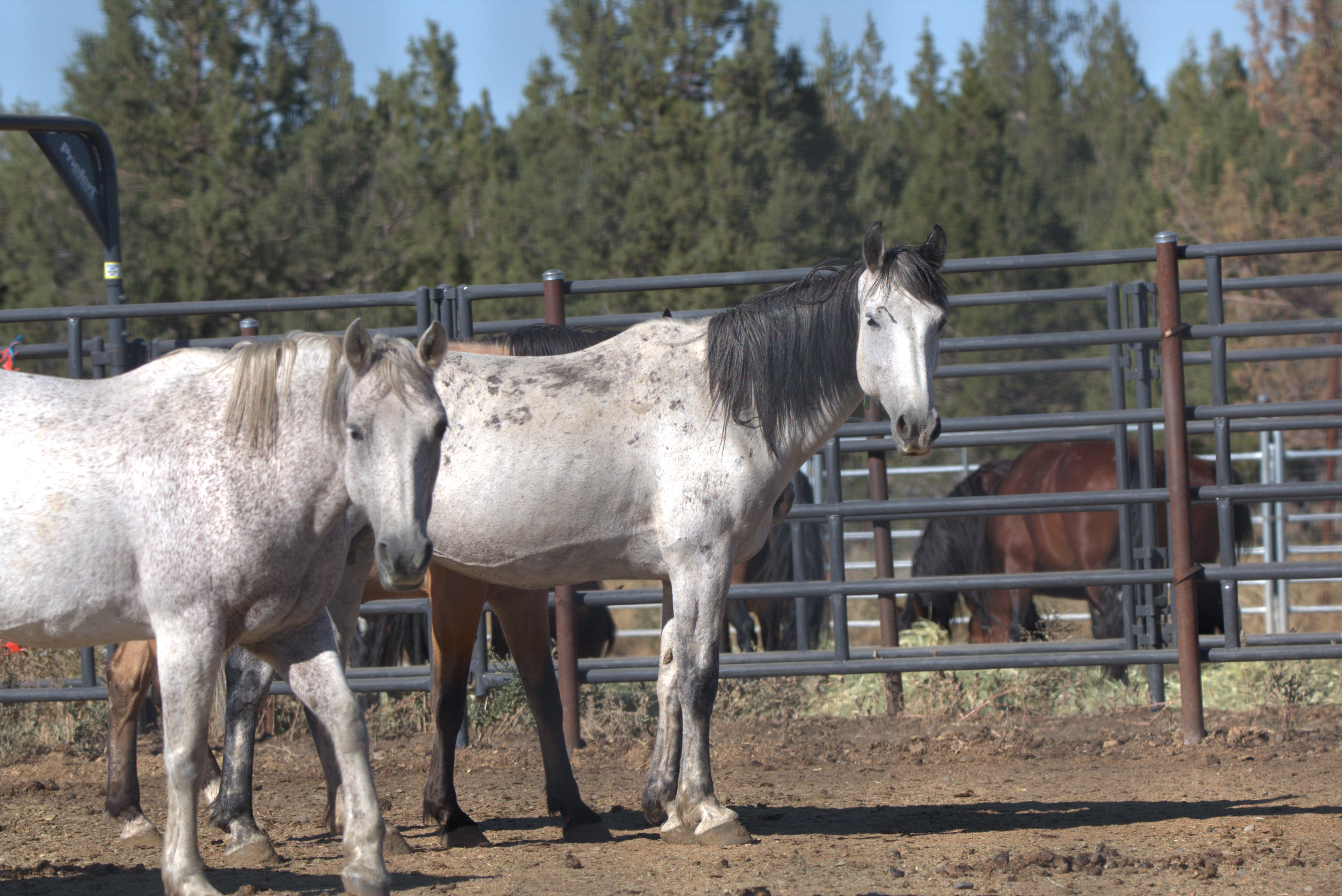
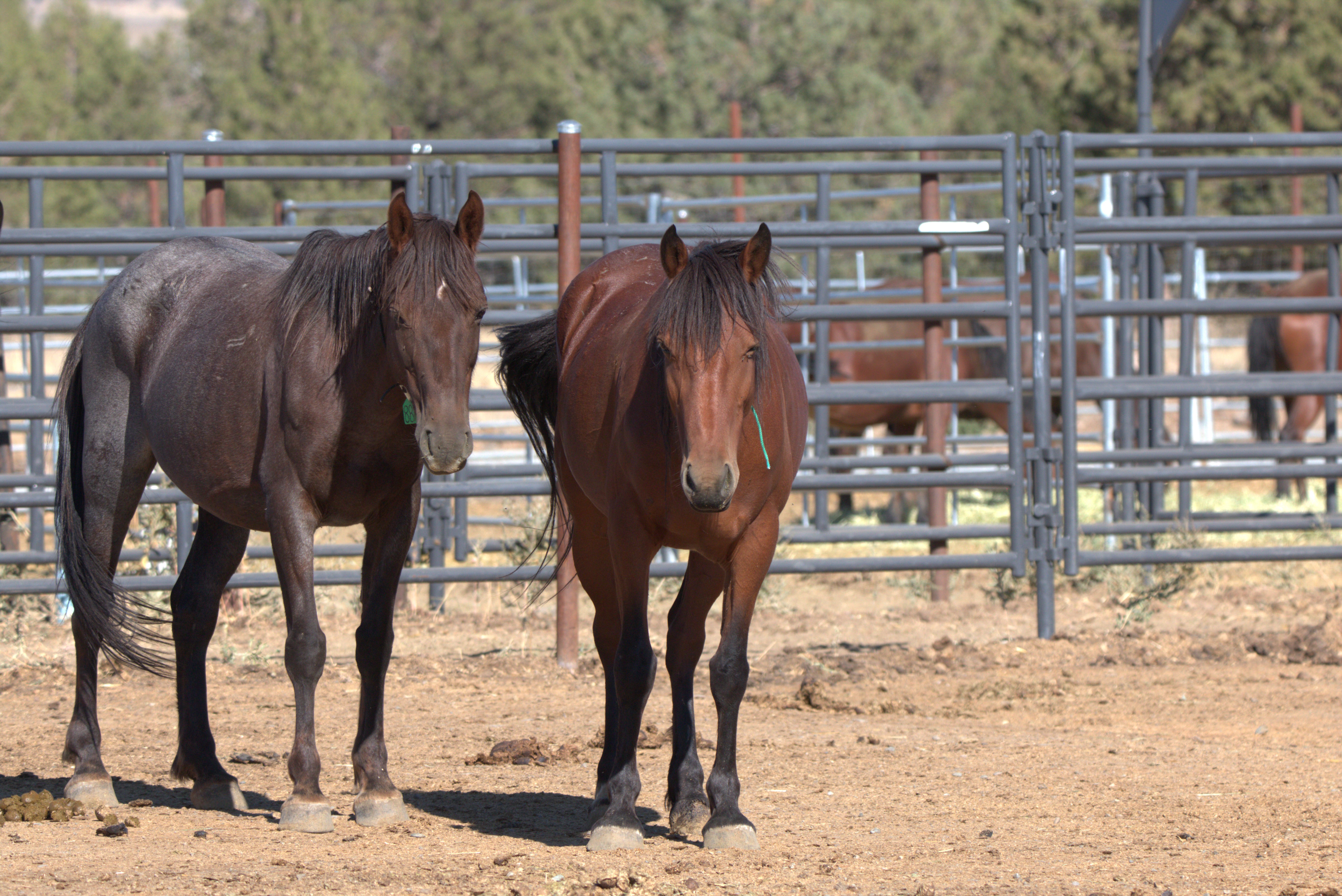
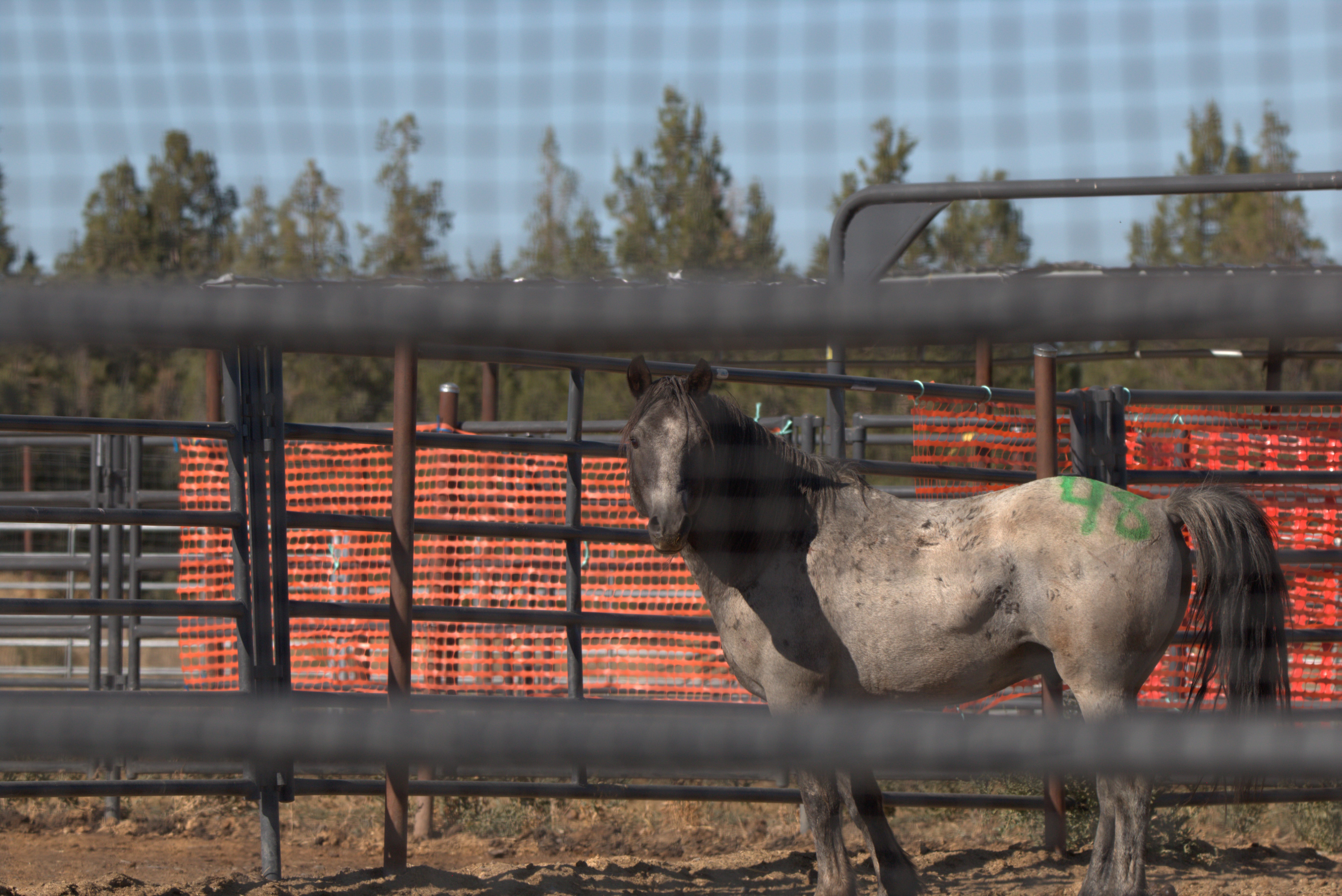
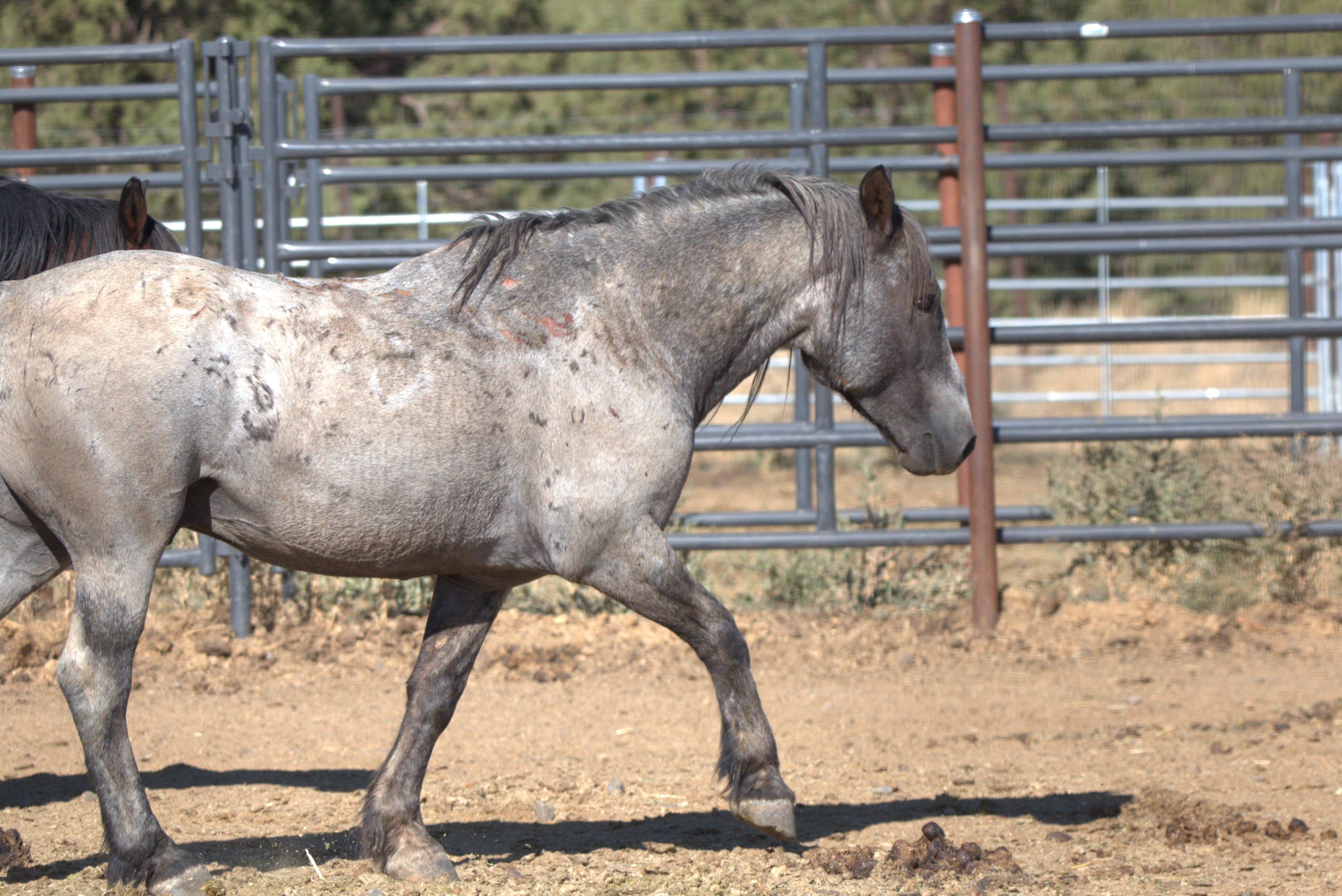

September 14, 2023: No Horses Captured Today
Today, no horses were captured at the Logan Slough trap site. There were multiple unsuccessful attempts to bring in a small group of three horses. The helicopter used aggressive tactics to guide the horses towards the trap. However, once they reached the clearing, they quickly turned around and escaped back into the trees. The only public observer present was the AWHC representative, who observed from a distance of 1.5 miles away from the trap site. Unfortunately, this observation area does not provide a view of the trap, loading, or handling processes.
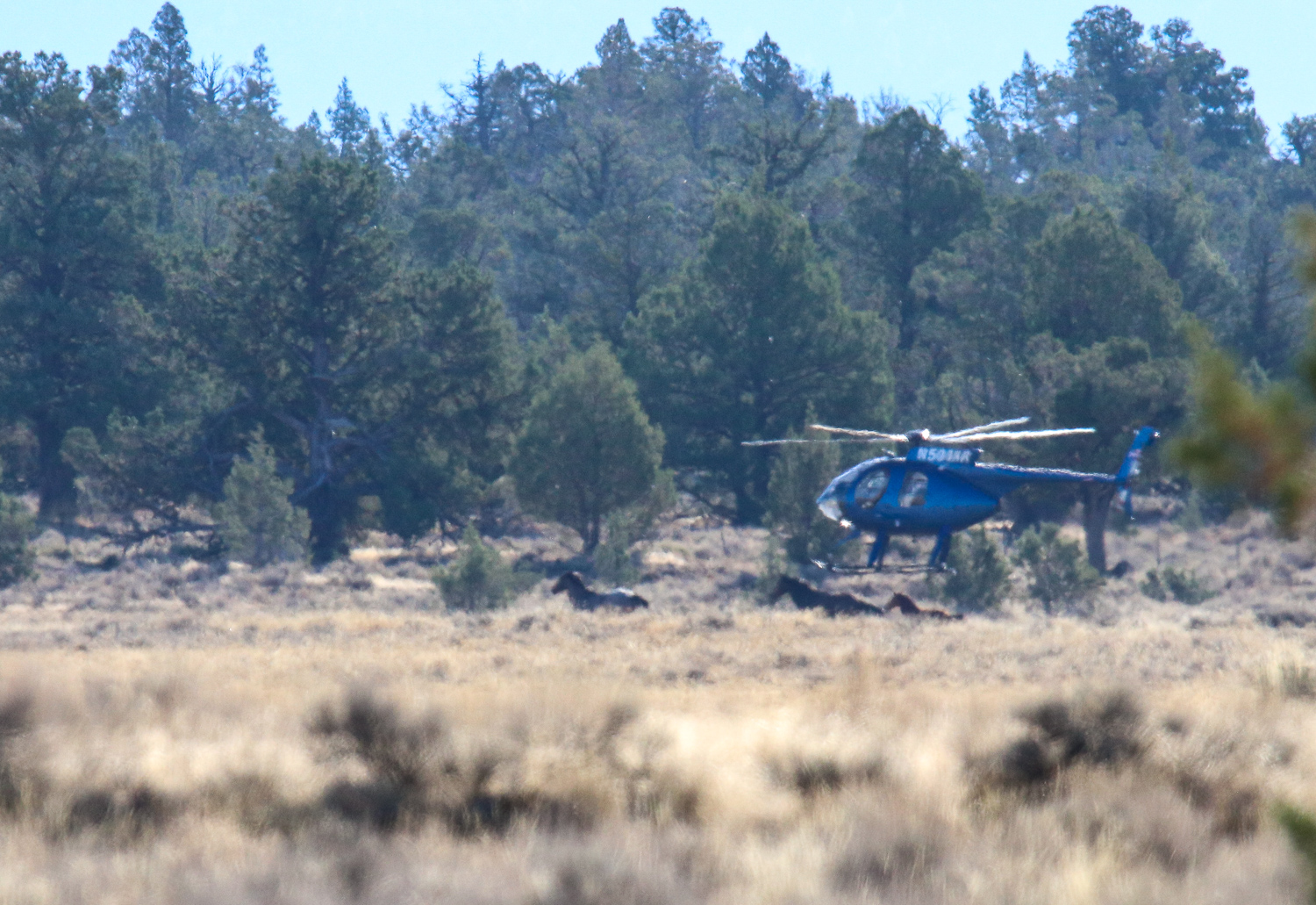
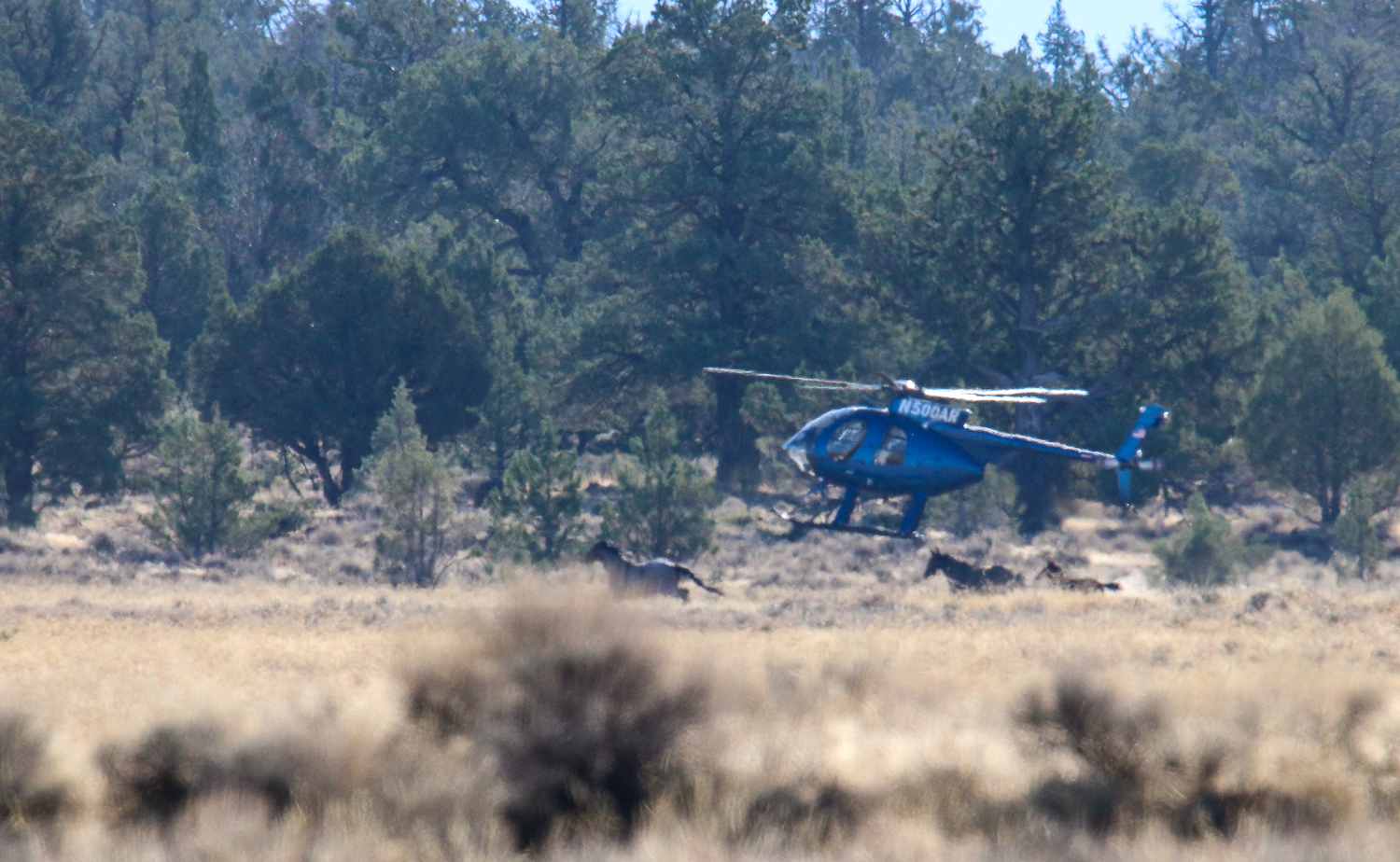
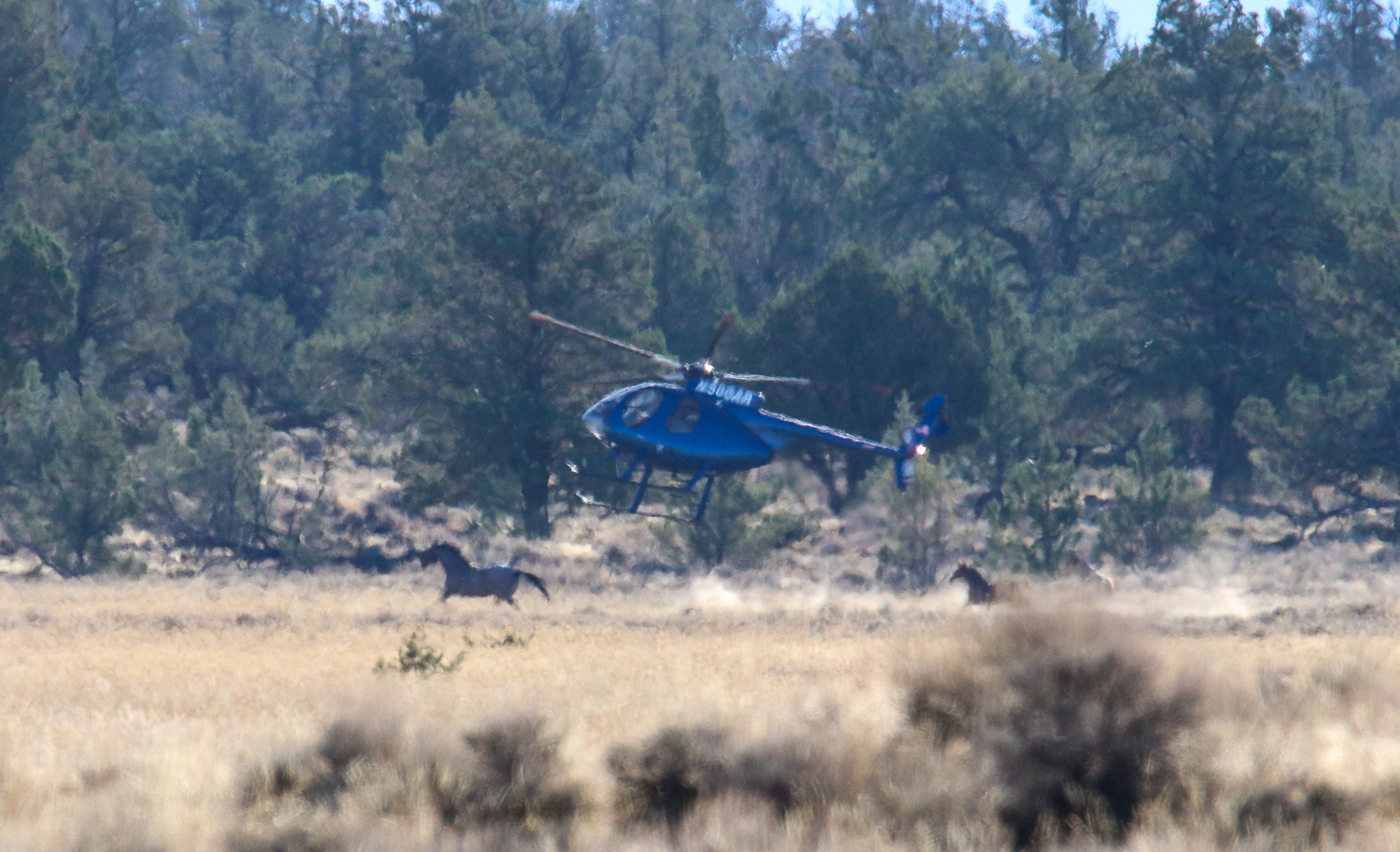
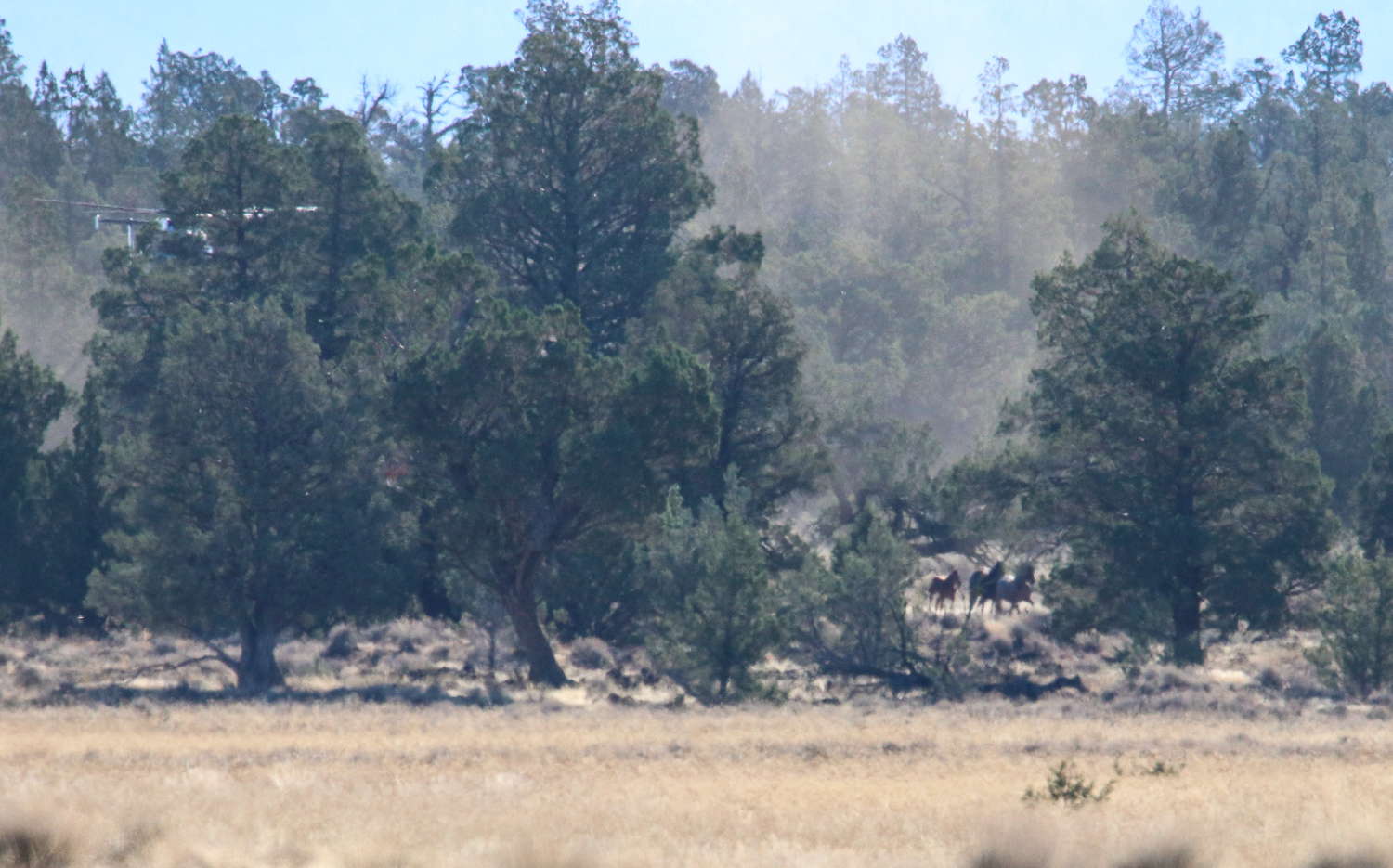
September 13, 2023: 6 Horses Captured
At the Logan Slough trap site, a total of 6 horses were captured. The only public observer present was the representative from AWHC. However, it's important to note that the observation area, which is about 1.5 miles away from the trap site, does not provide a view of the actual trapping, loading, or handling process. The operations for the day concluded around 1:15 after completing just one run.
Despite being confined in the next pen, one of the stallions displayed a strong desire to be near his mares. This week, the stallions that were captured appeared to be in excellent condition, which is a positive sign considering the years of drought that Devil's Garden has experienced. Additionally, today, a total of 3 mares and 3 stallions were captured.
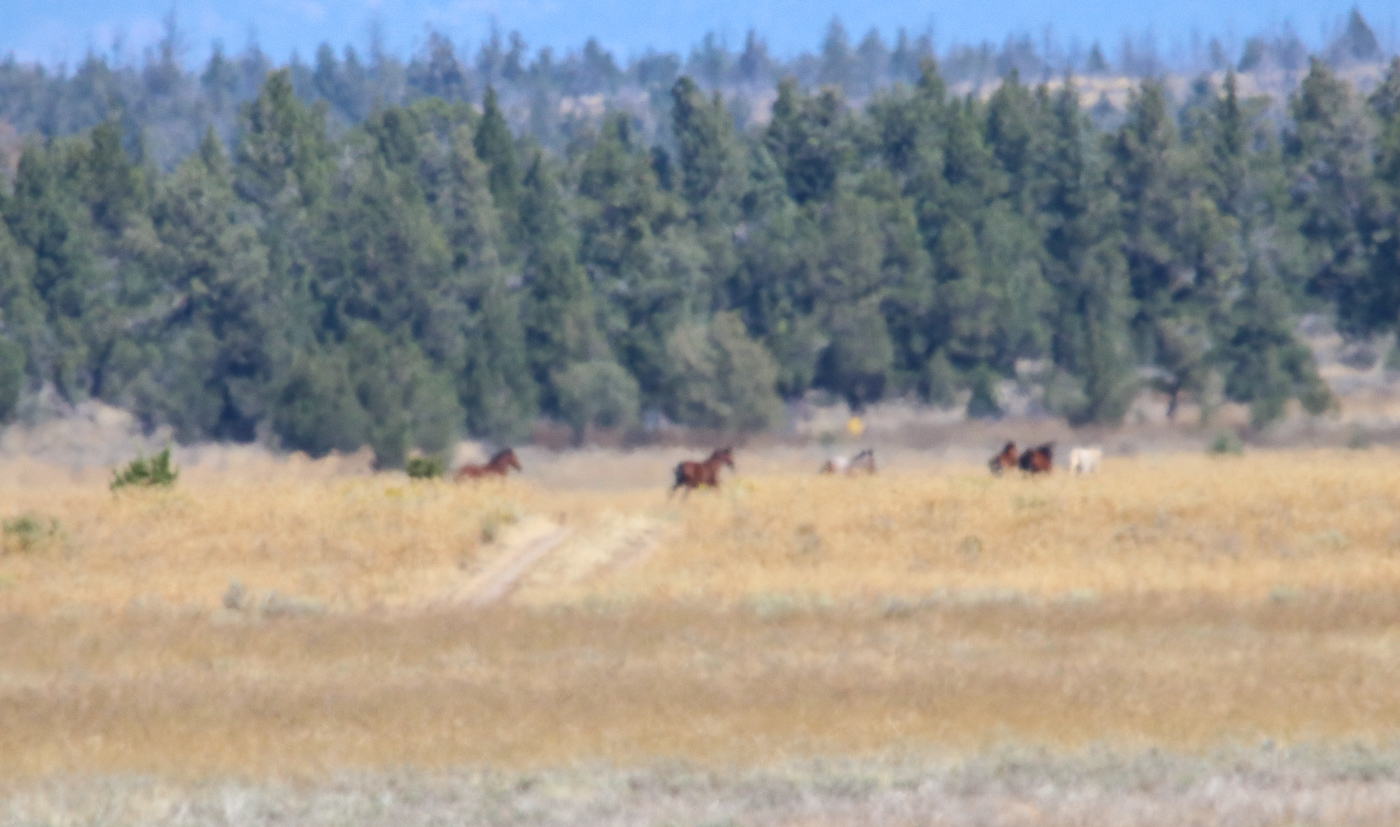
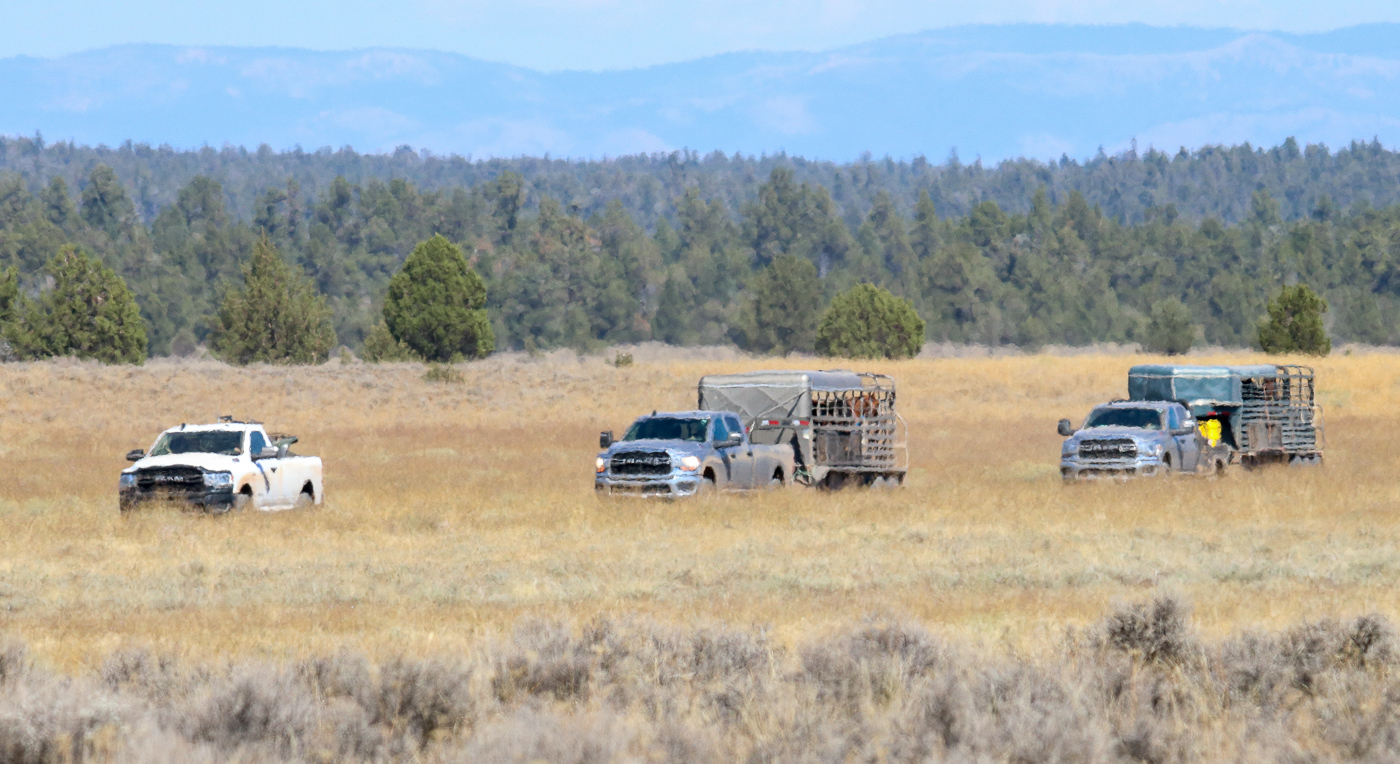
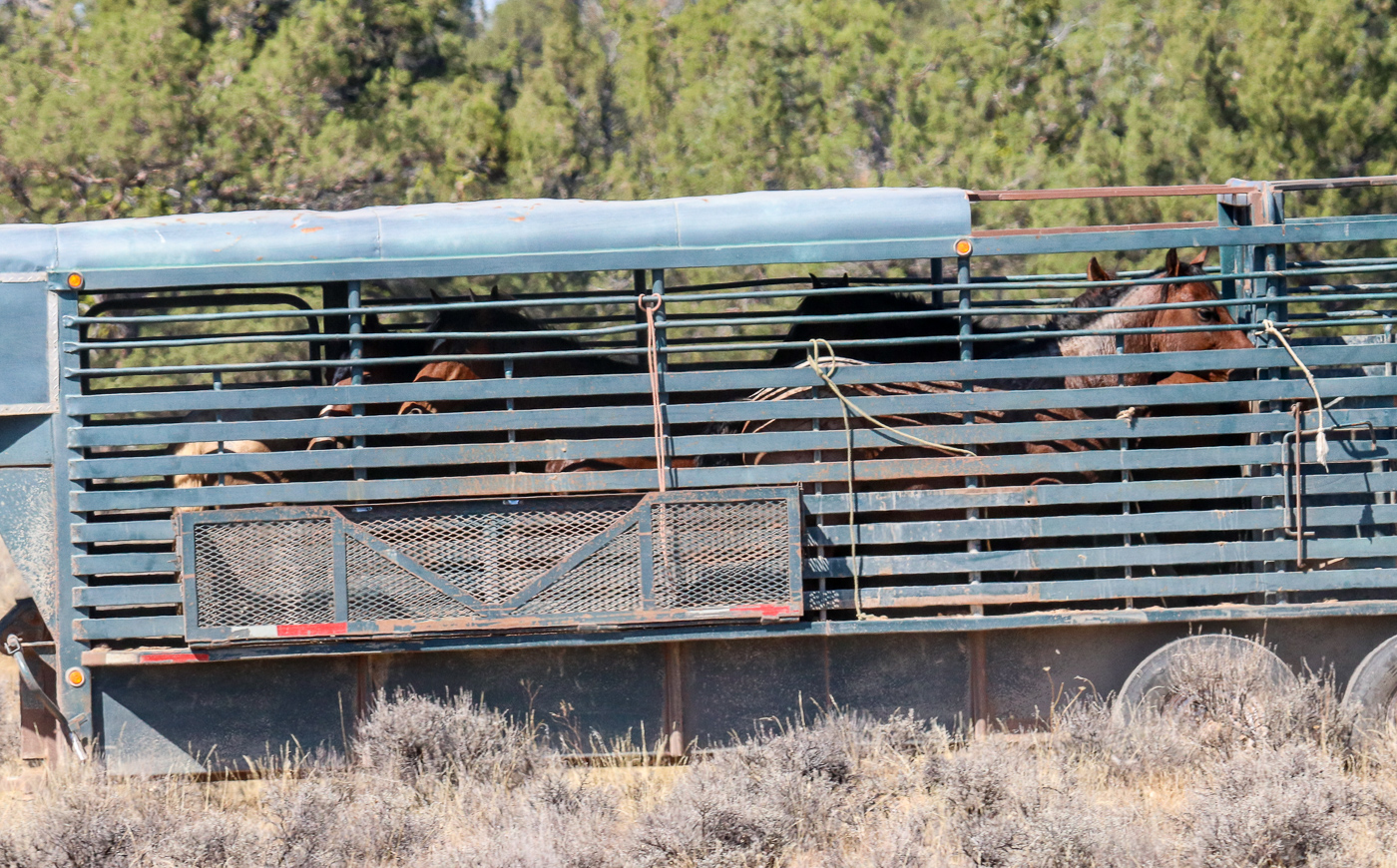
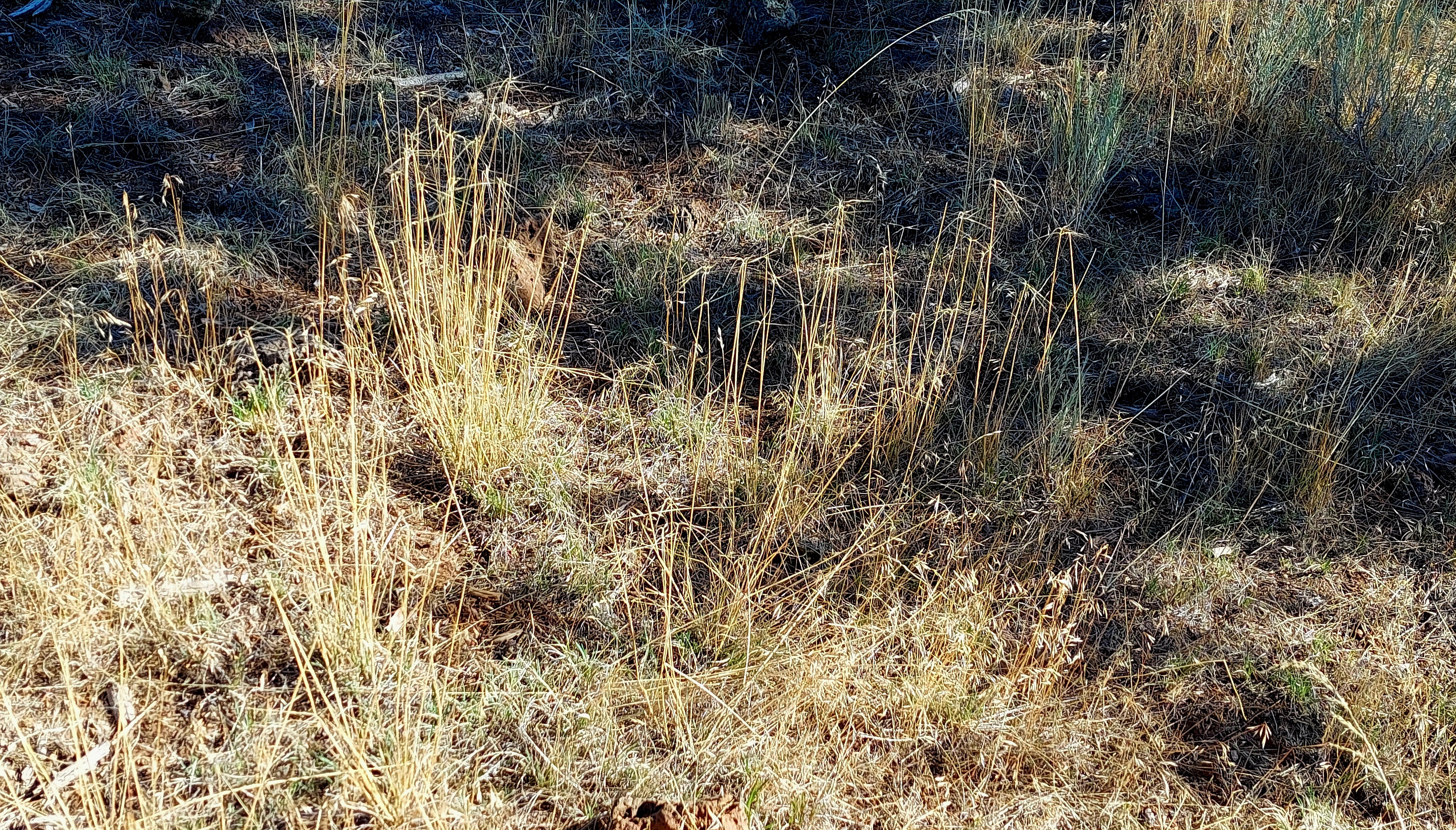
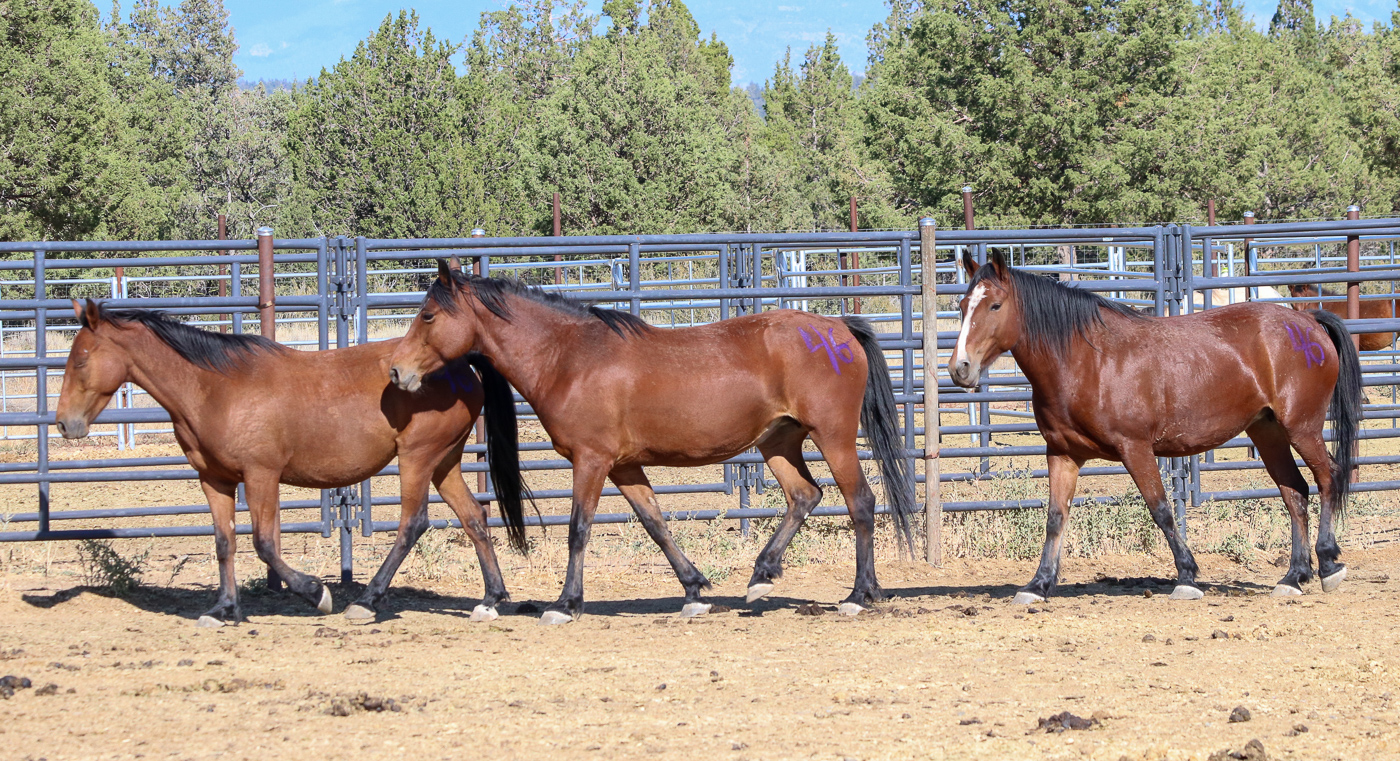
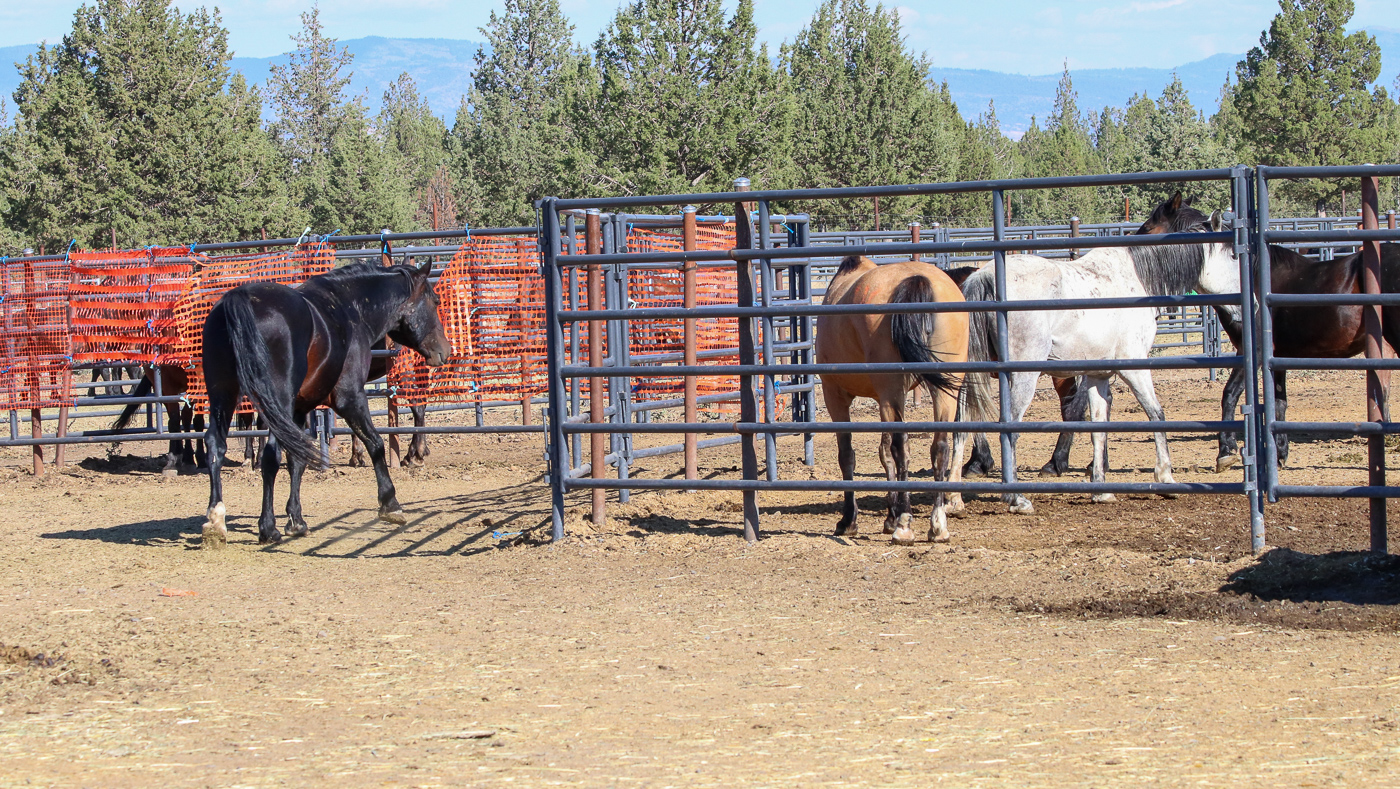
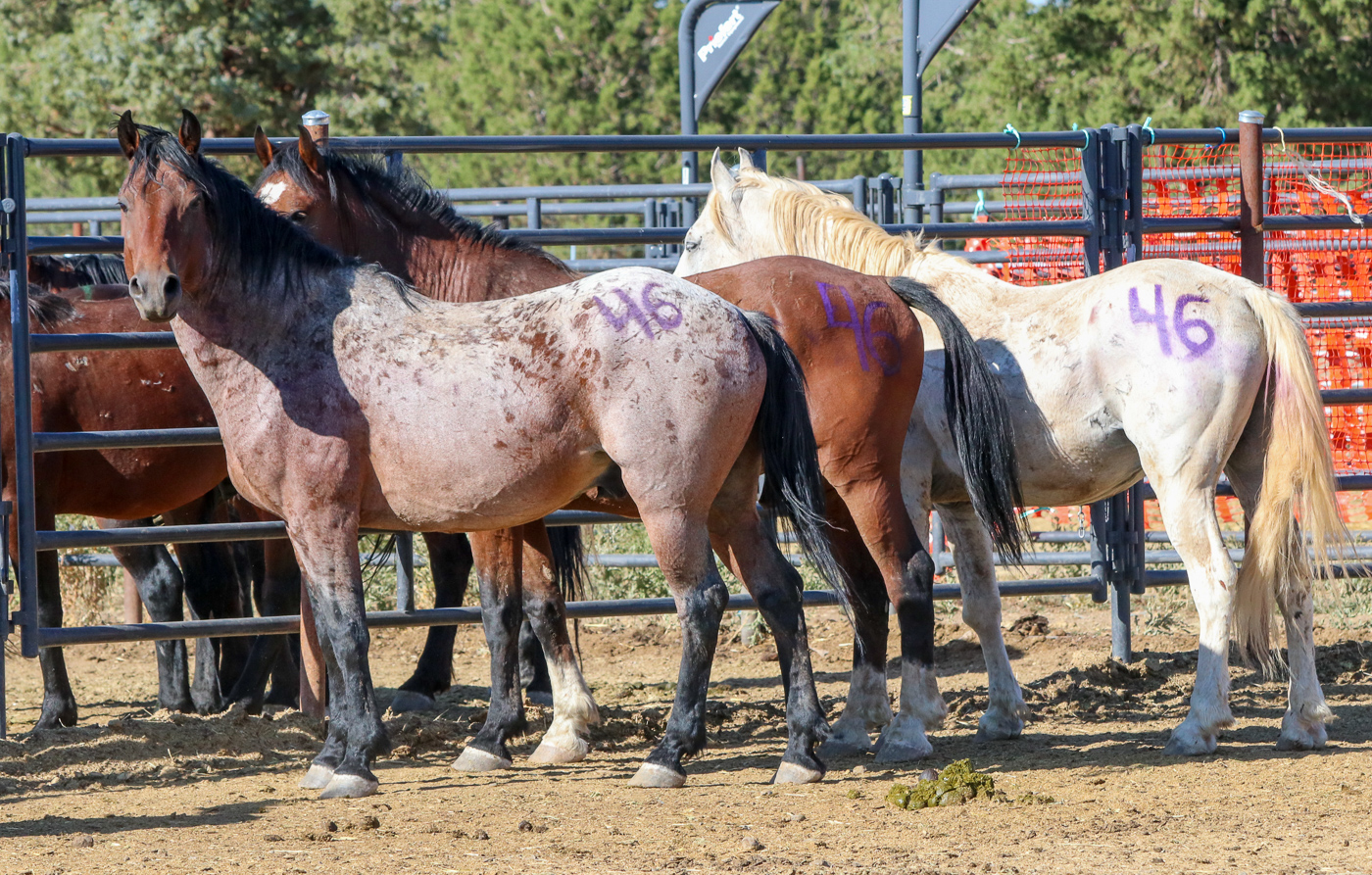
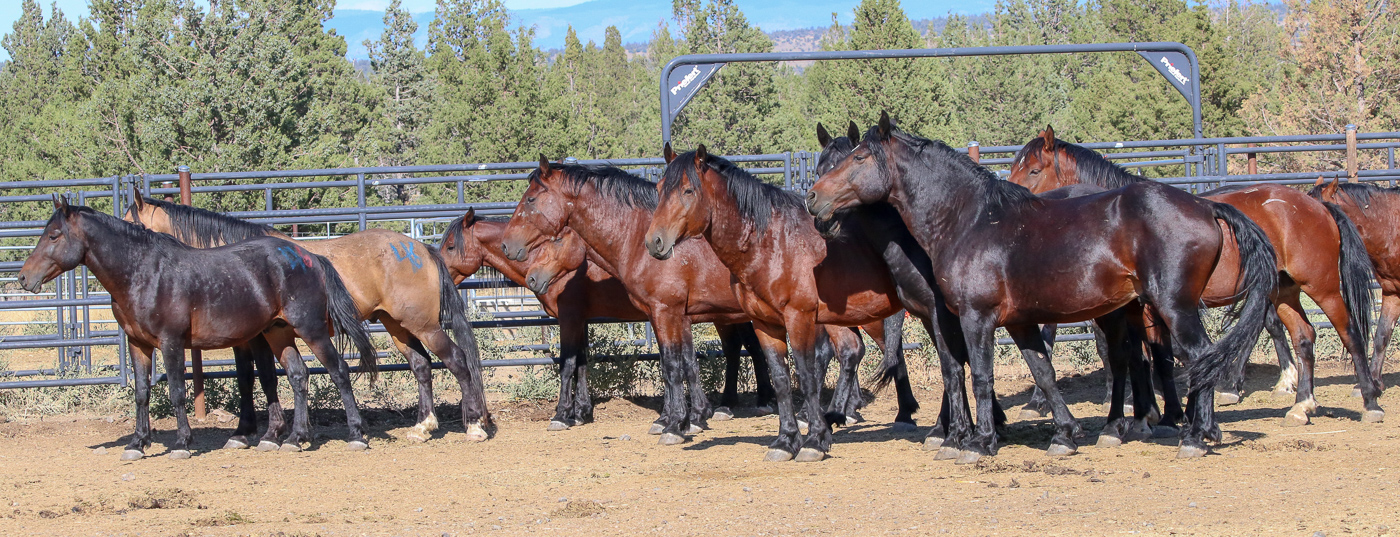
September 12, 2023: 7 Horses Captured
At the Logan Slough trap site, seven horses were captured. The only public observer present was the AWHC representative, who observed from a distant location about 1.5 miles away from the trap site. However, this observation area did not provide a view of the trap, loading, or handling process.
The day concluded around 12:15 after only two runs were conducted. The first run resulted in the capture of two horses, while the second run involved six horses being pushed down the fence line to an opening. After the horses scattered and tried to hide under the trees, only five of them were seen being pushed towards the trap.
At the Double Devil Corrals, some of the mares have already undergone processing with tags and microchips. Unlike the BLM, they do not plan on using neck brands. One of the stallions was still displaying anxiety due to being separated from his mares in the next pen. Some of the mares captured today appeared to be a bit skittish, and some of the foals seemed too young to have been separated from their mothers.
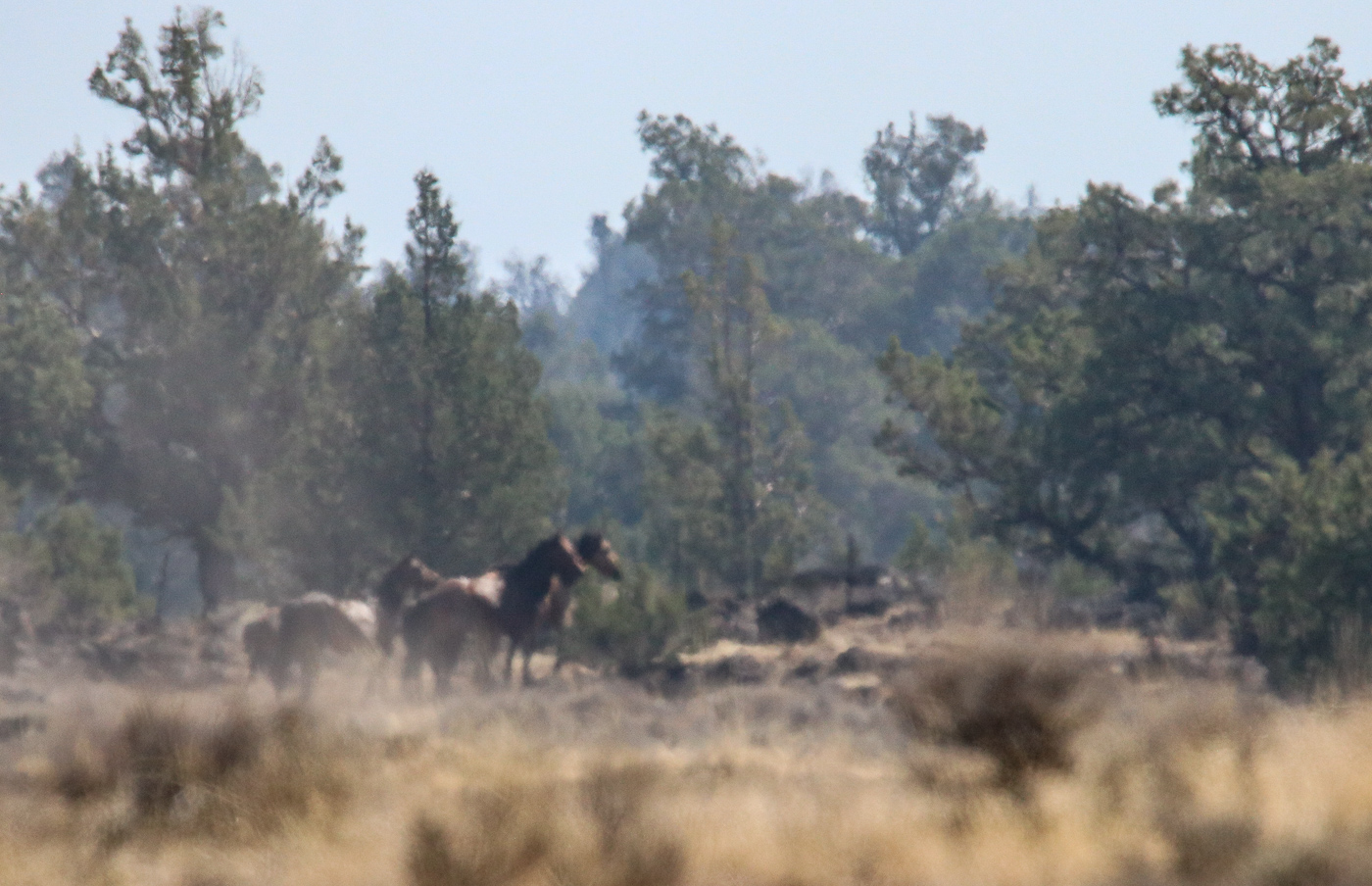
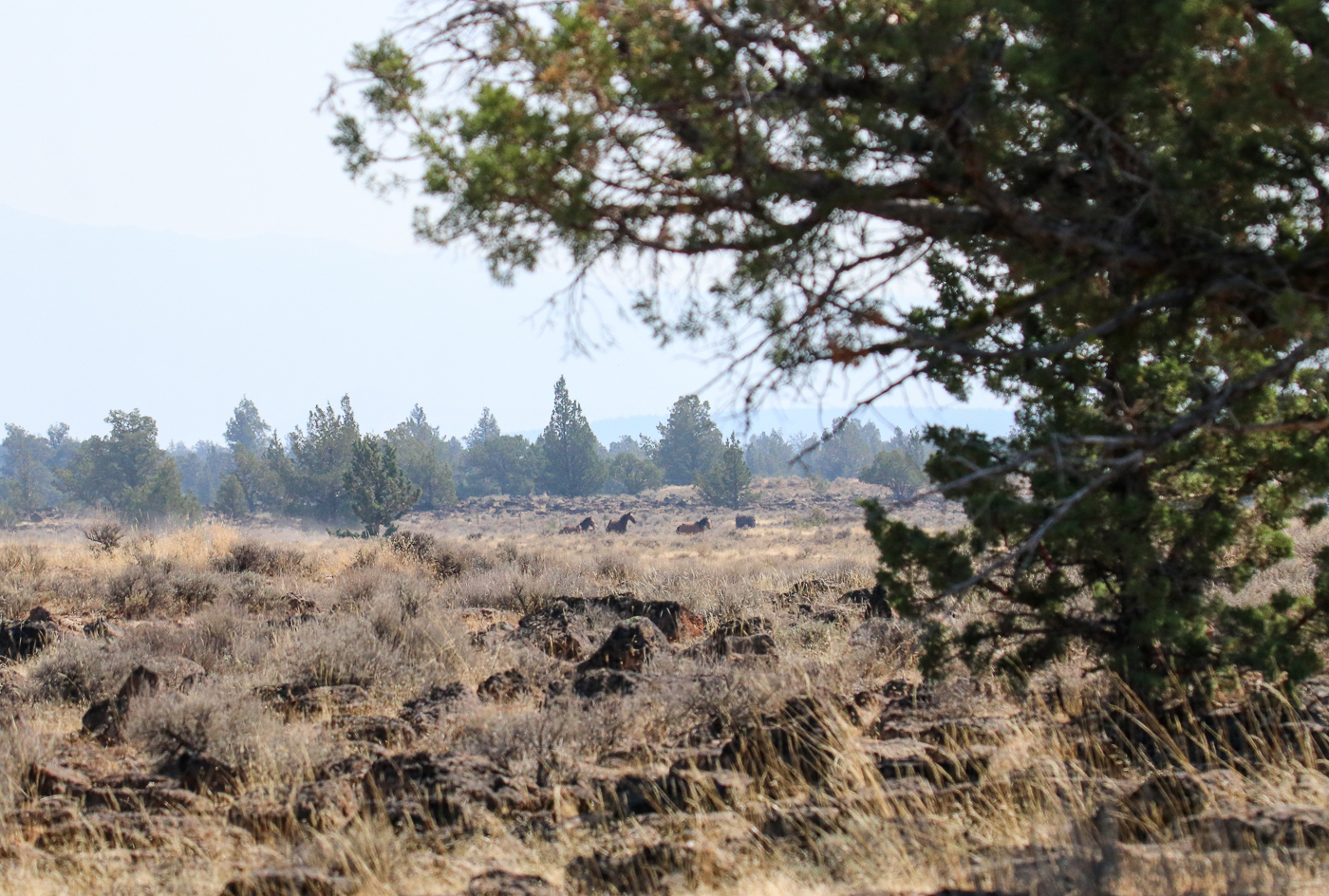
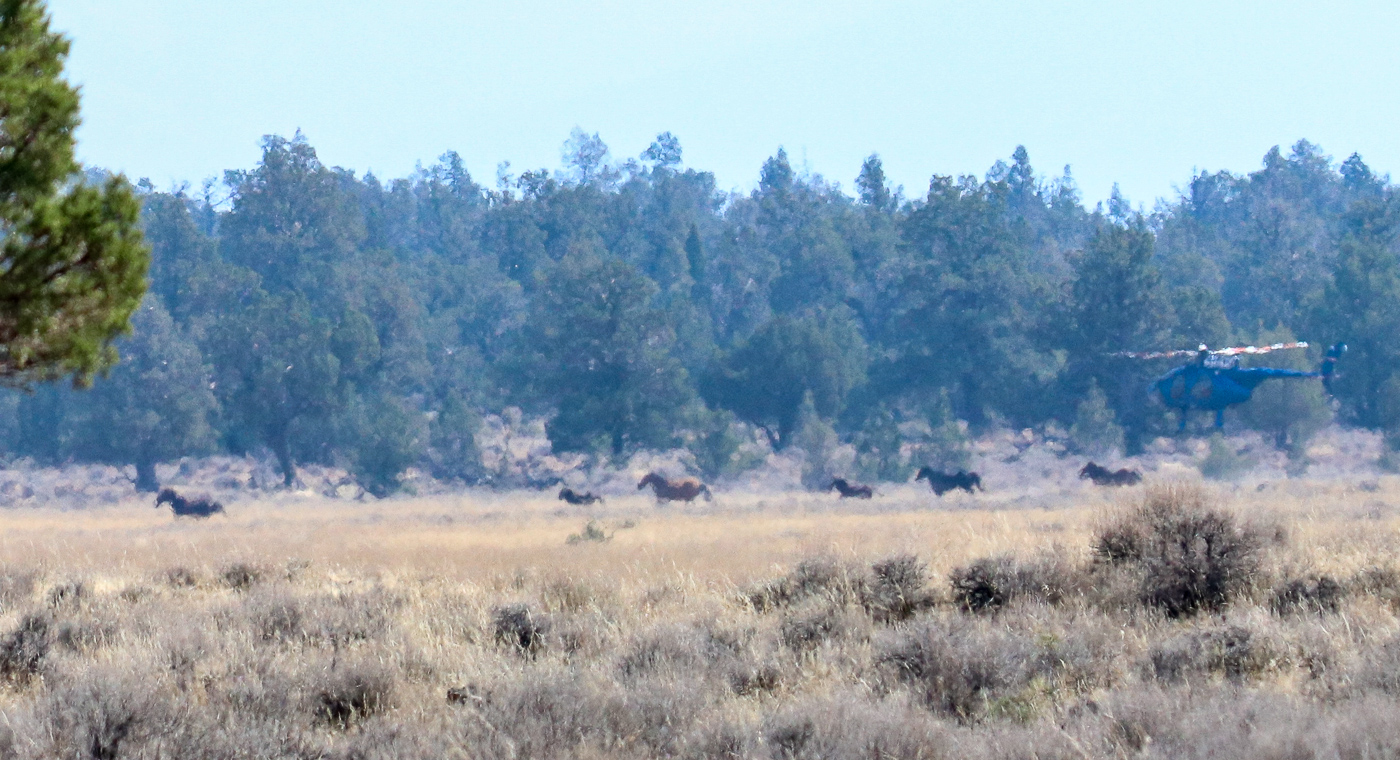
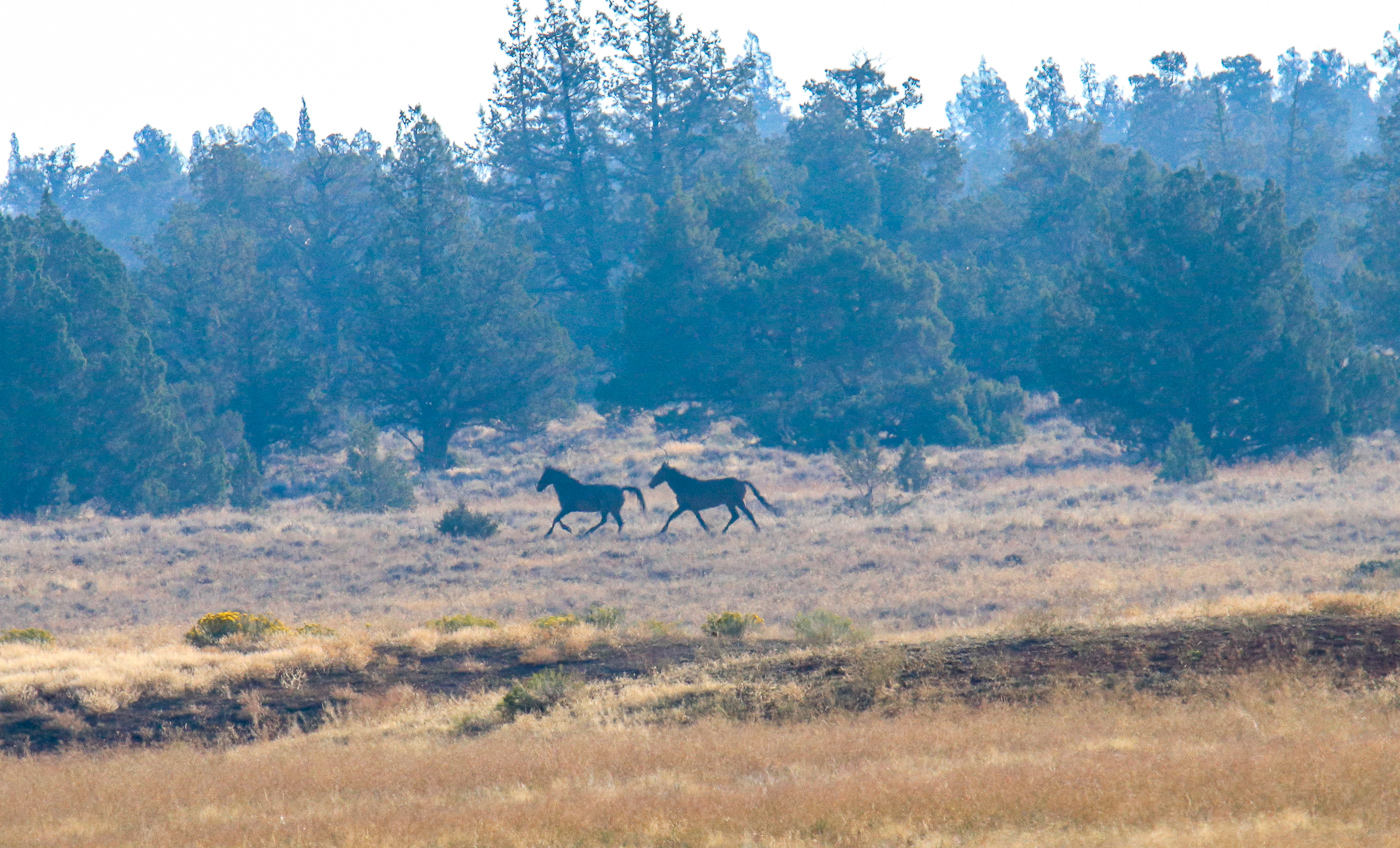
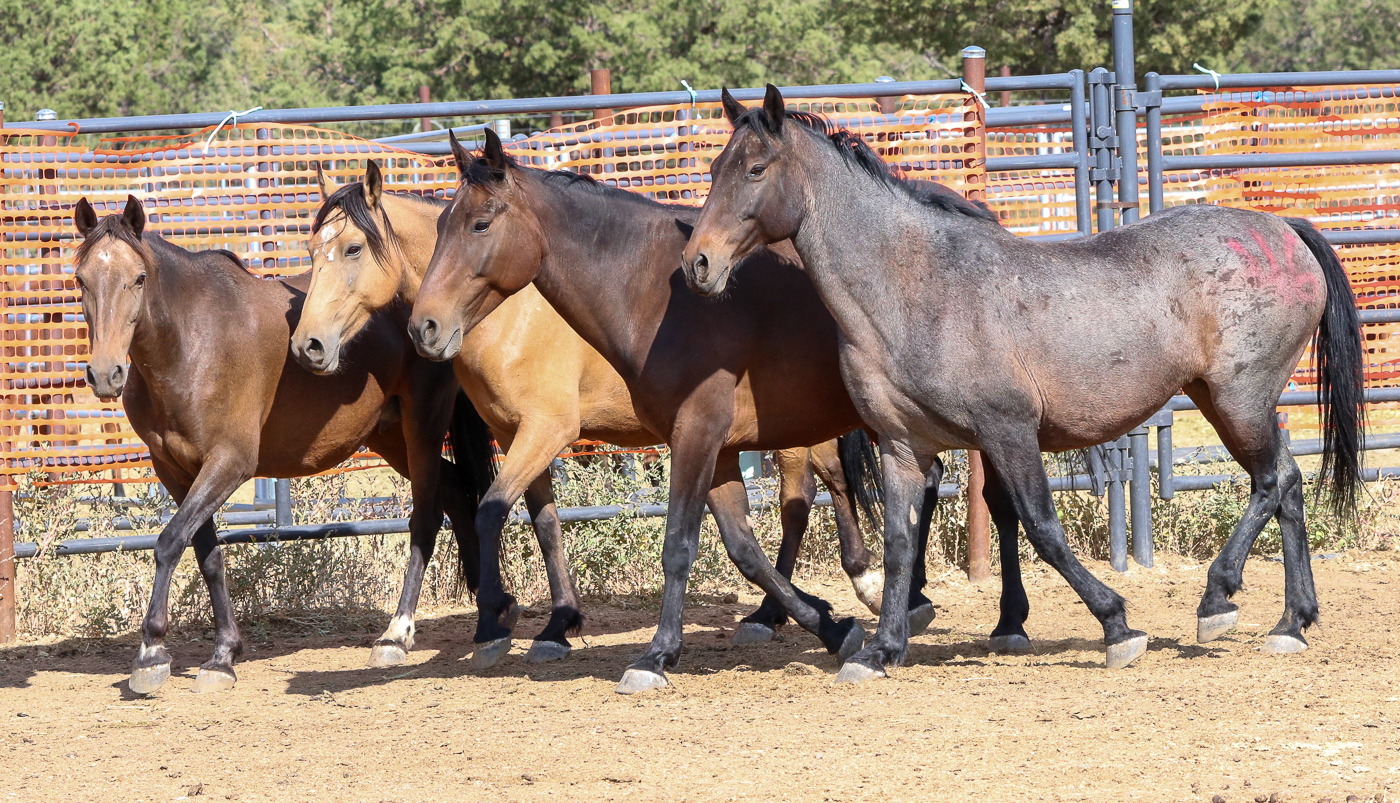
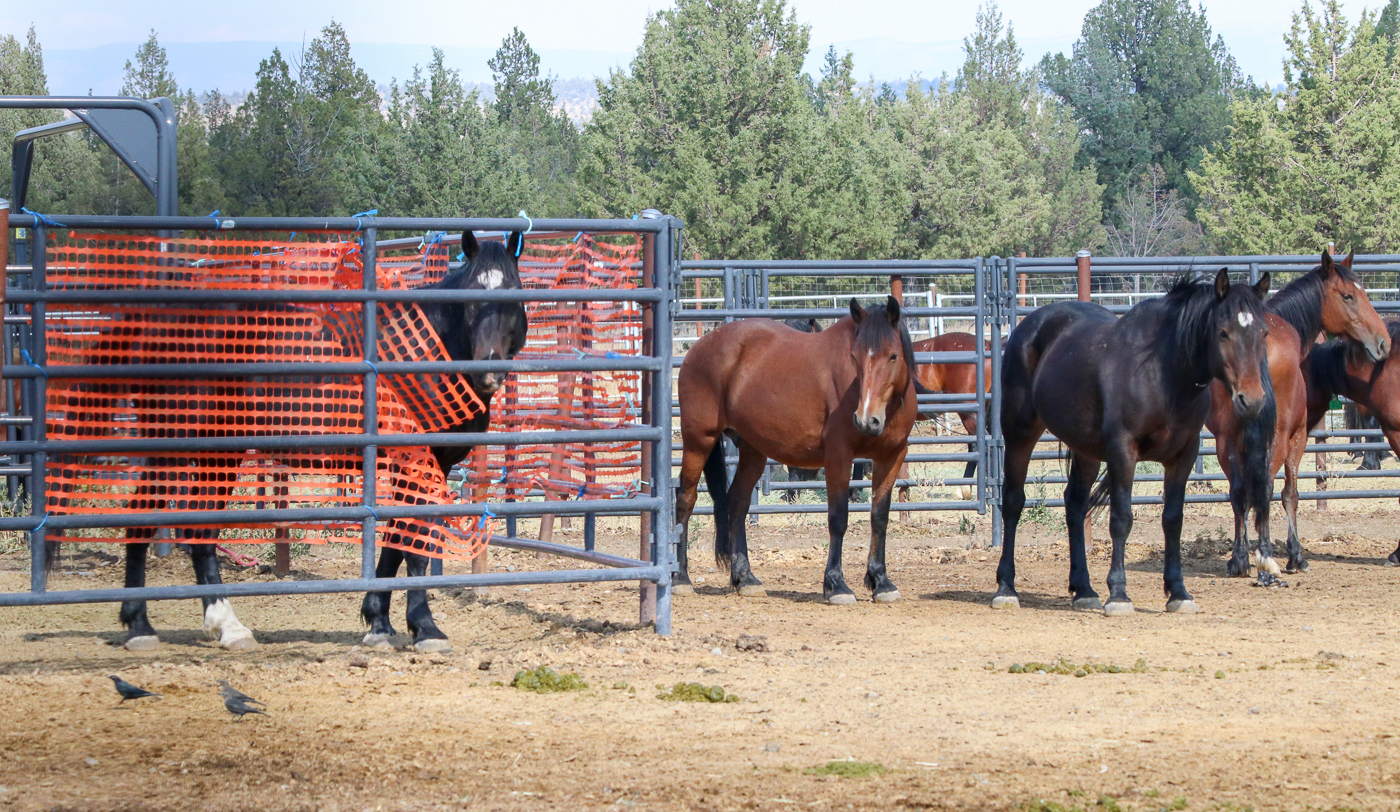
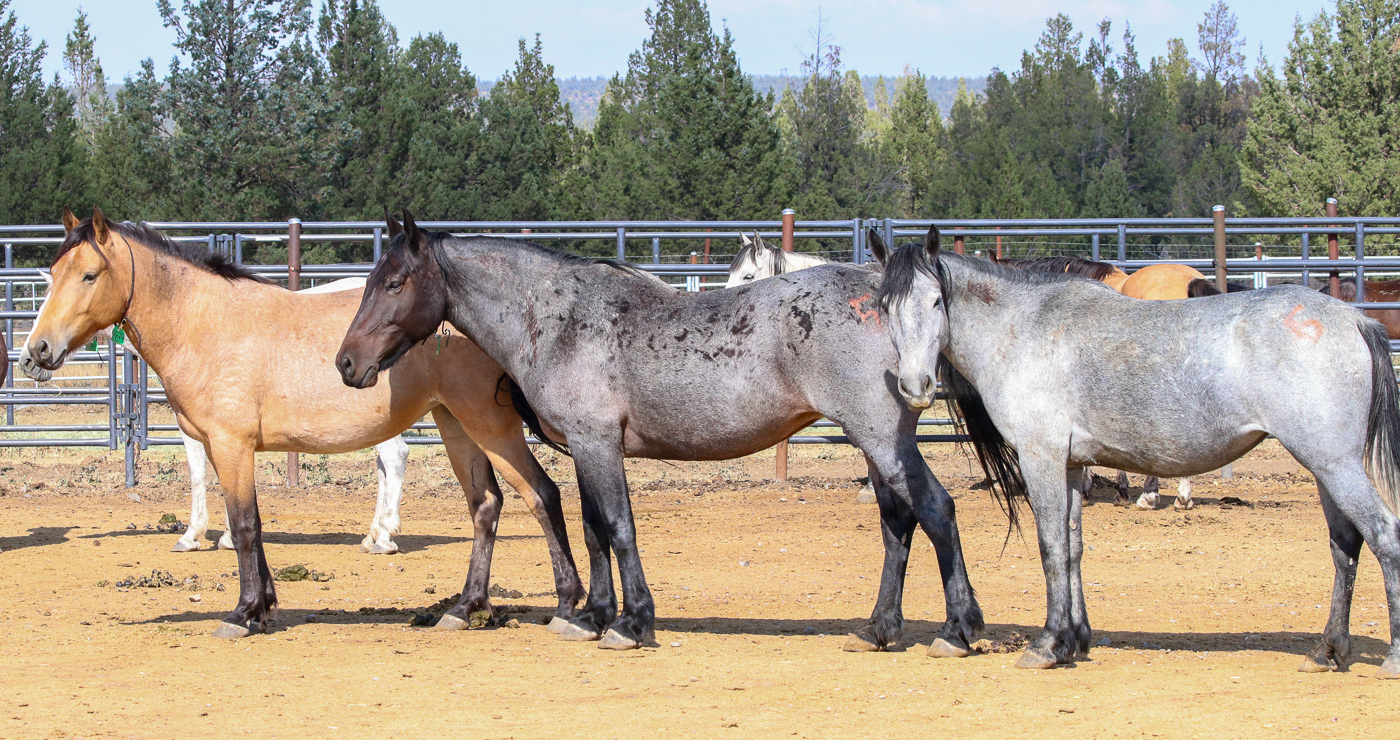
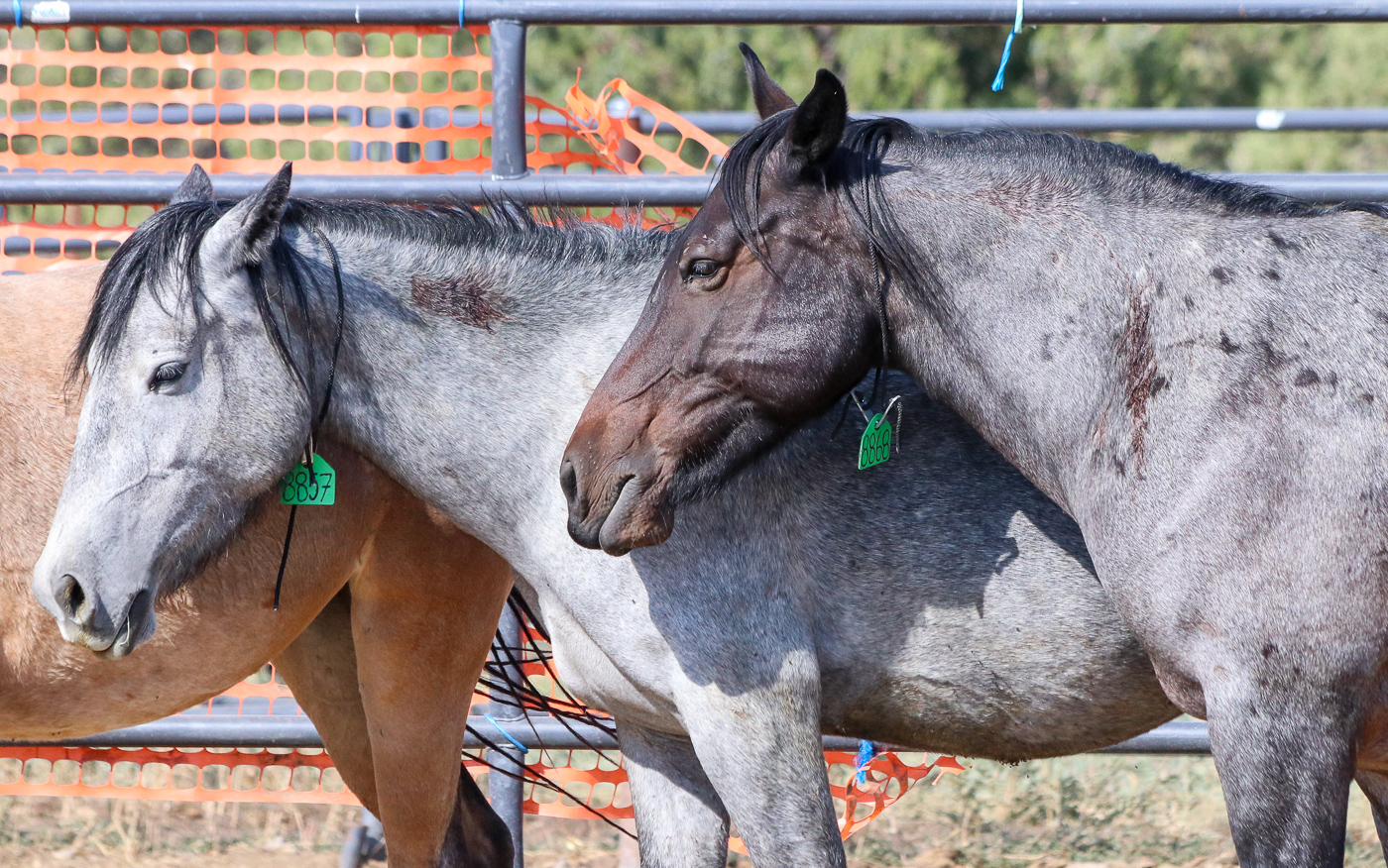
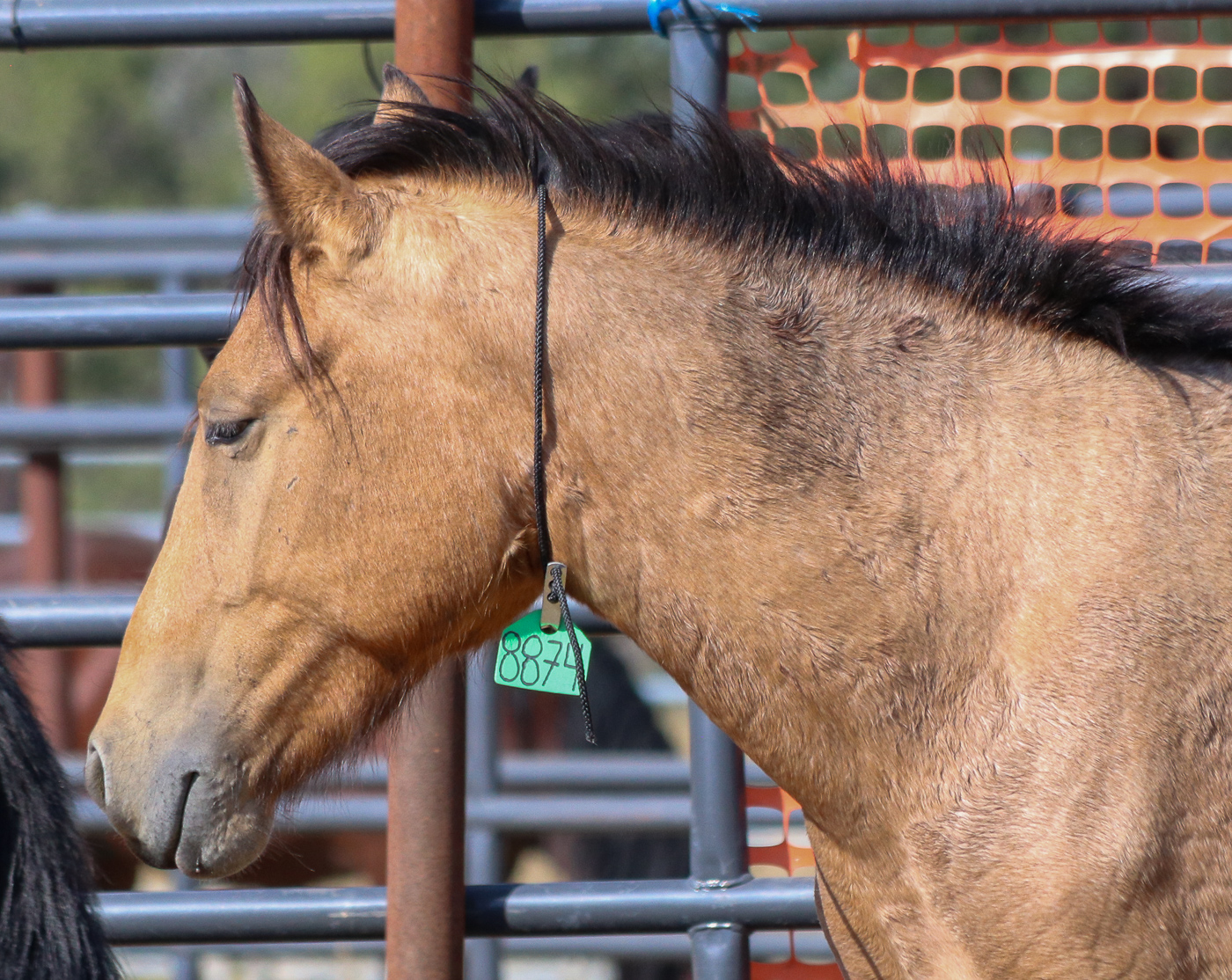
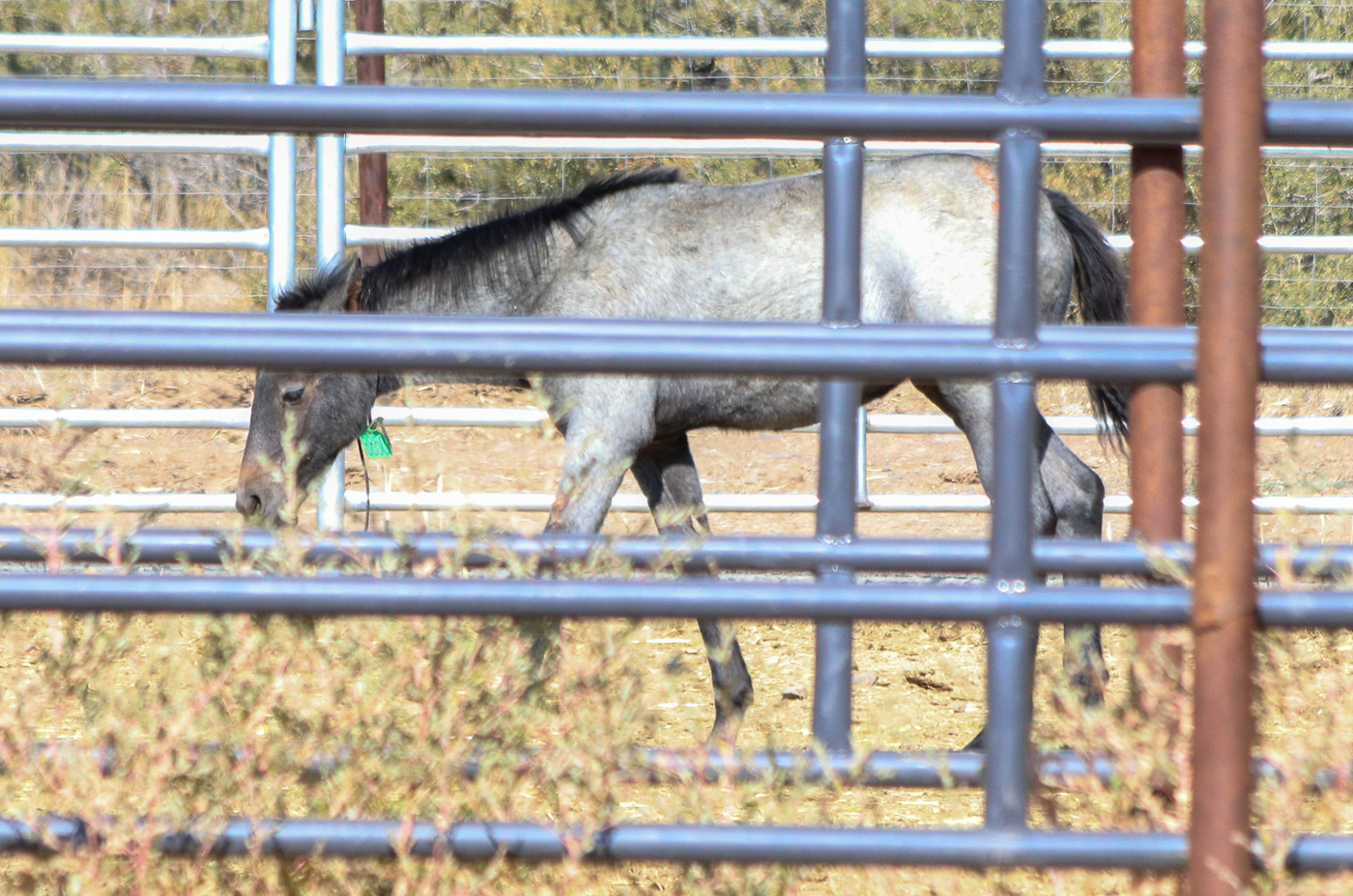
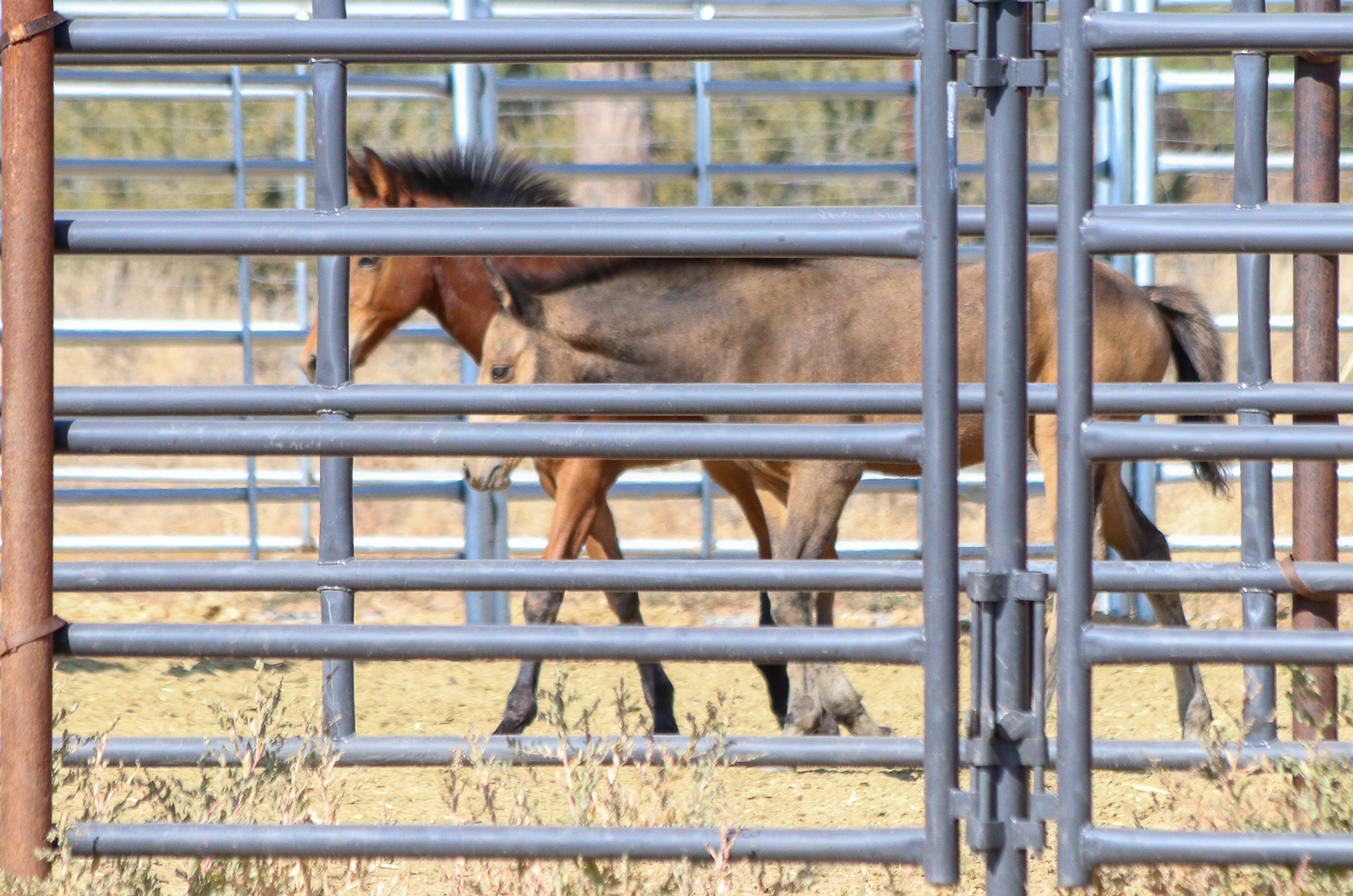
September 11, 2023: 11 Horses Captured
At the Logan Slough trap site, a total of 11 horses were captured. The only public observer present was from the AWHC. However, the observation area was over a mile away from the trap site, providing no view of the actual trapping process.
After completing one round of capturing, which included separating two buckskin foals from their mothers (in the wild, they would continue nursing for a longer period), the day's operations were concluded. It is worth noting that all the captured horses appeared to be in good physical condition and weight.
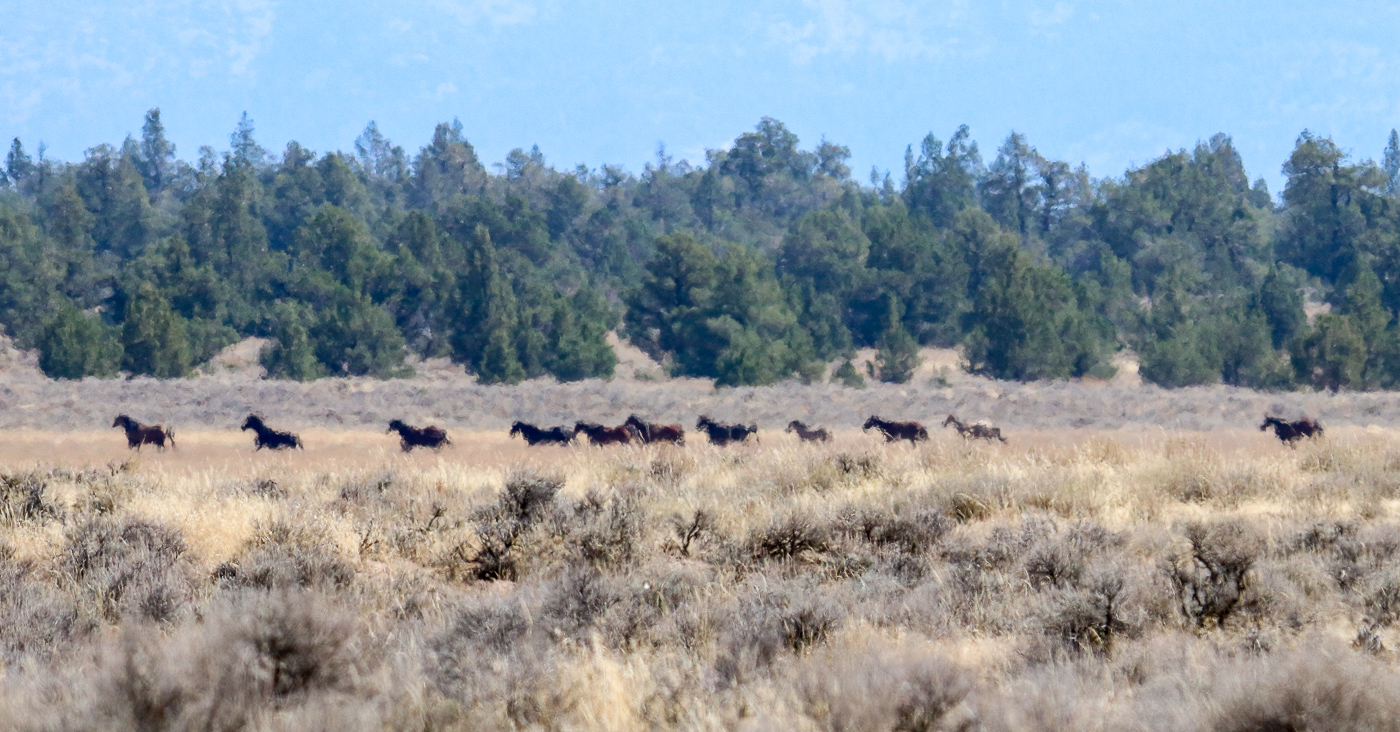
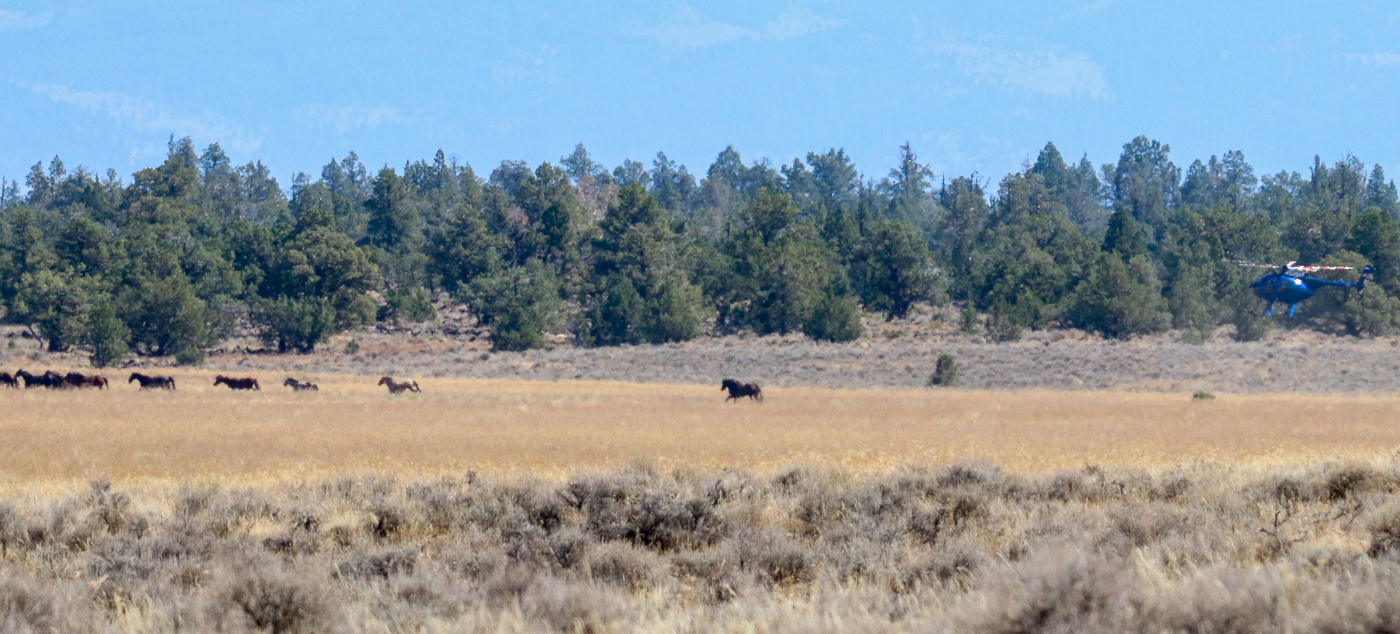
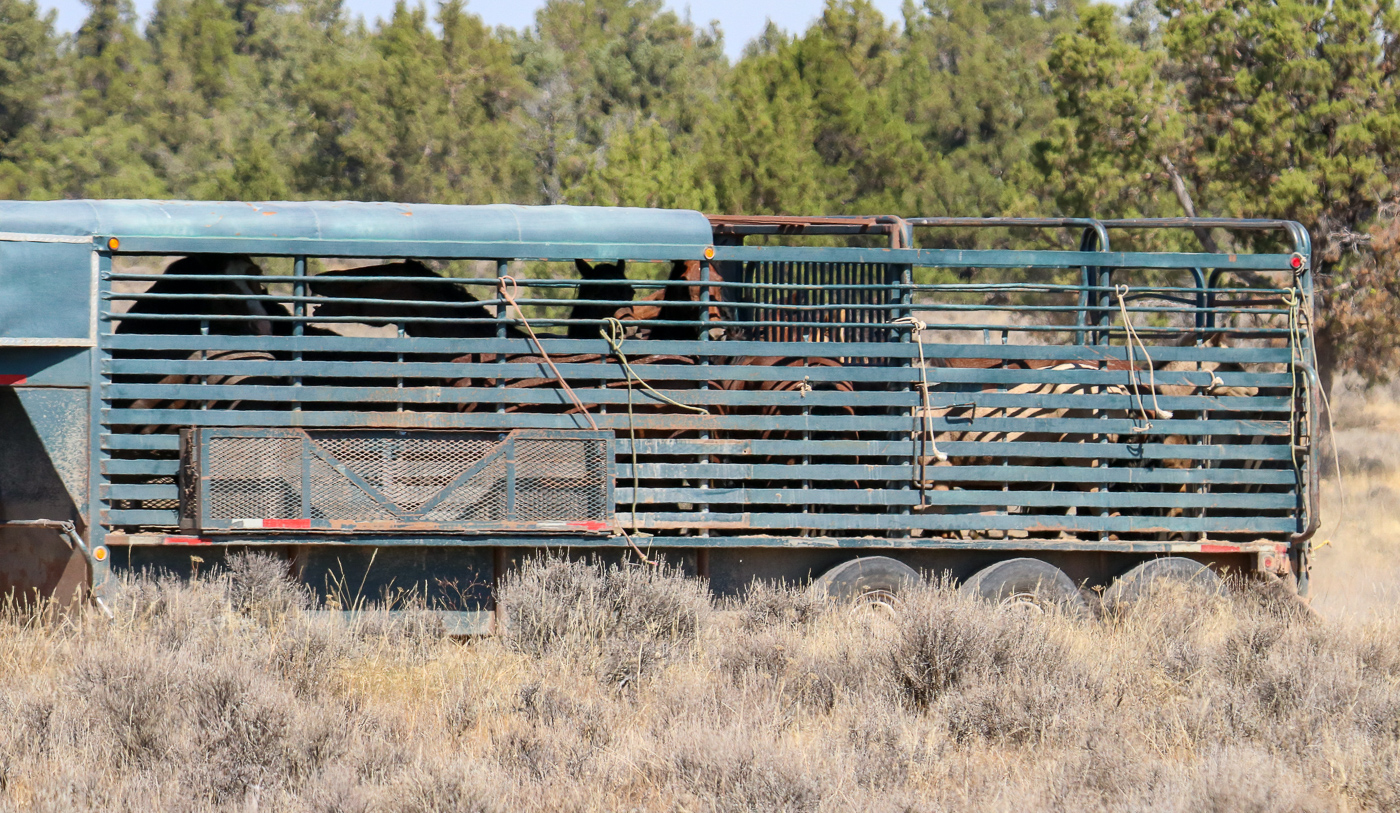
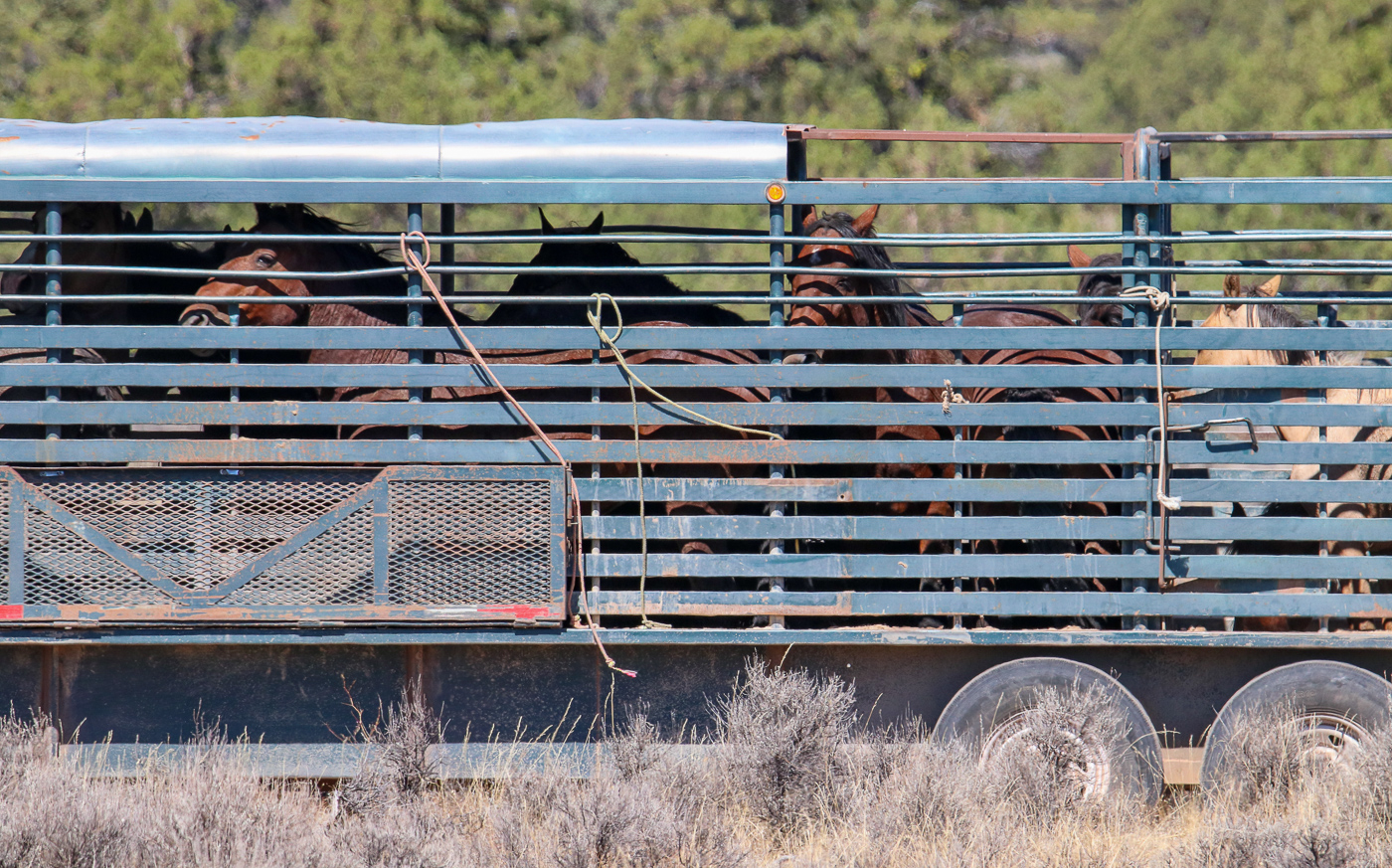
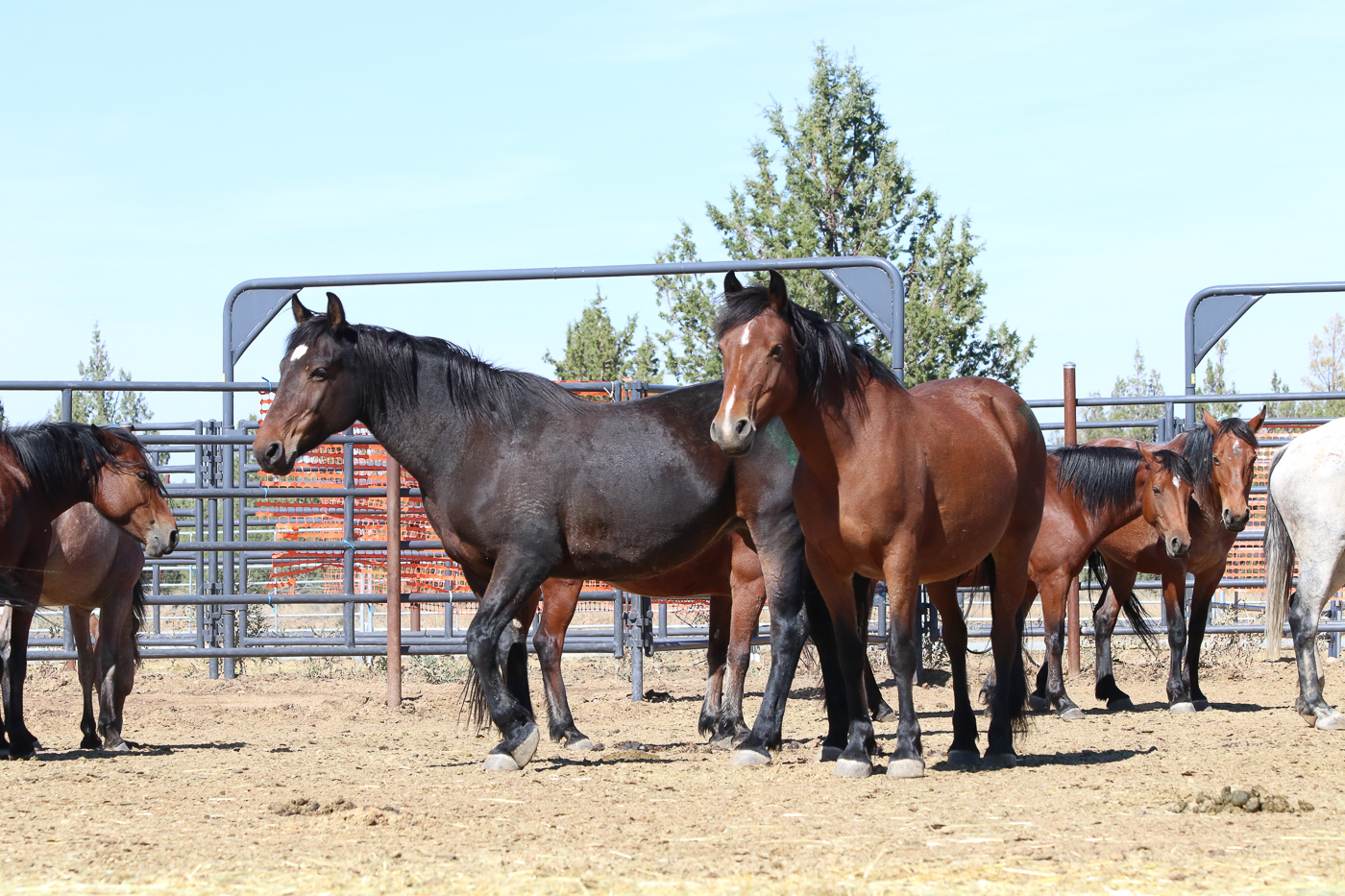
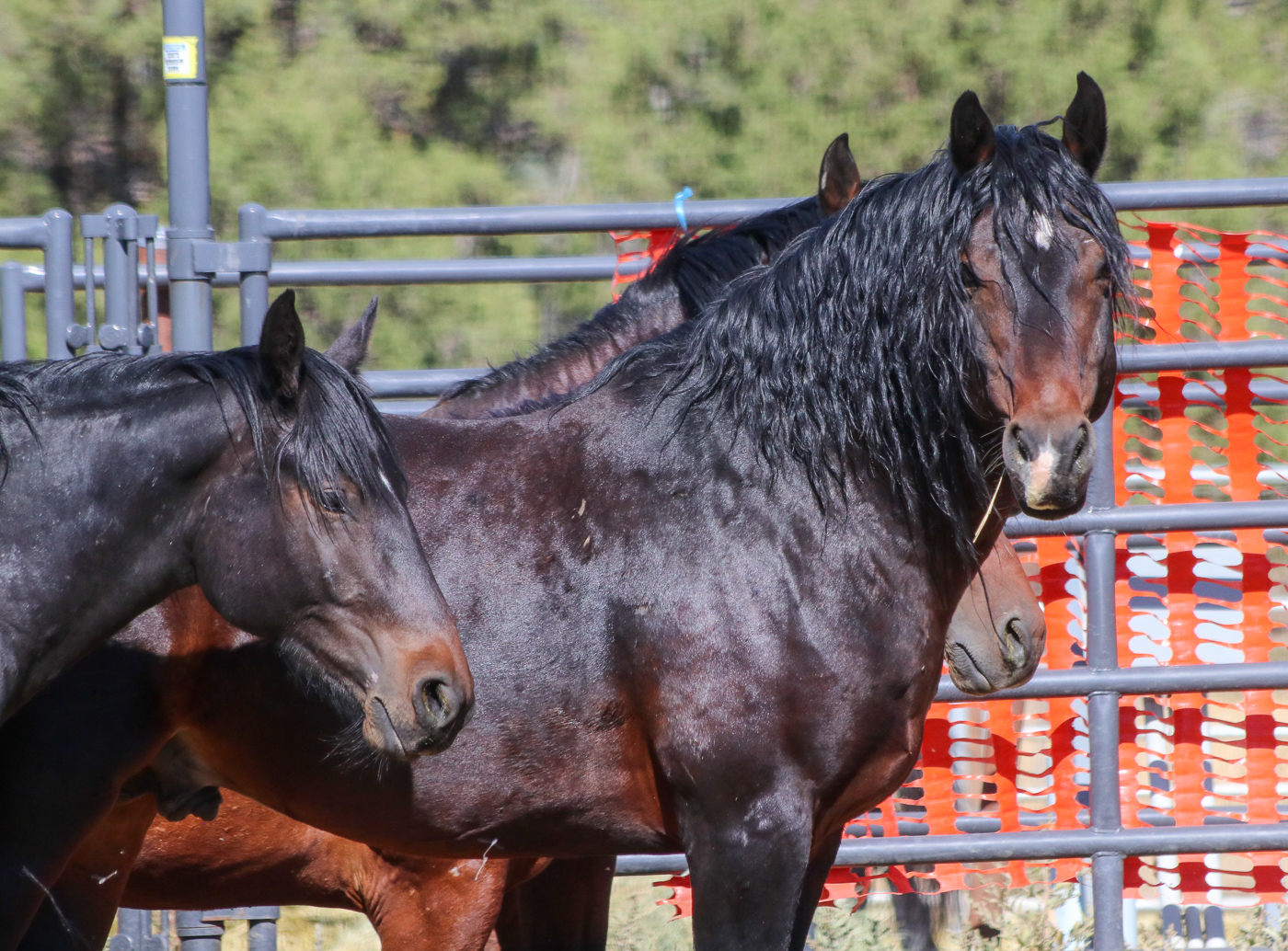
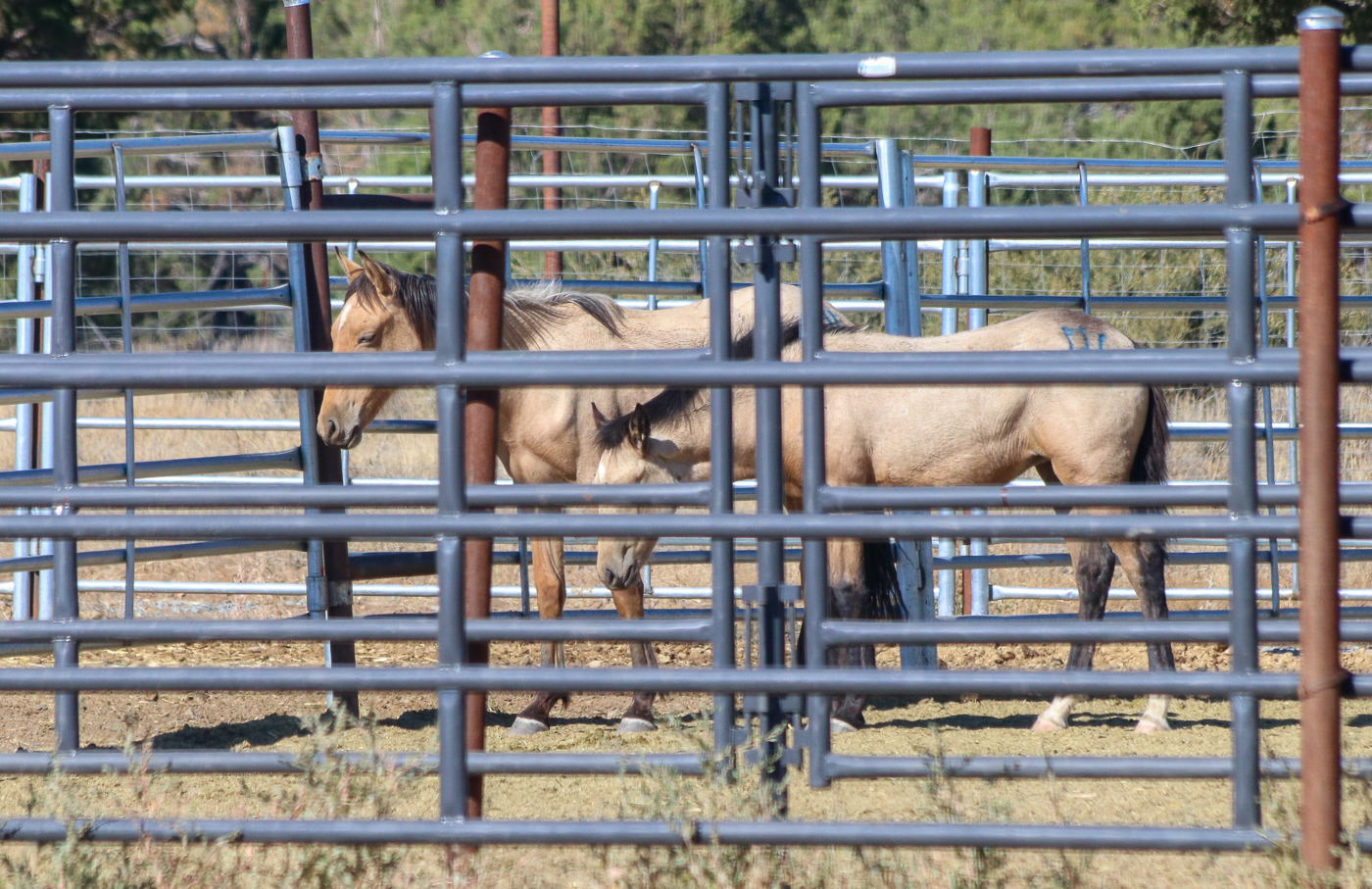
September 10, 2023: 5 Mustangs Captured
Today, a total of five horses were captured and removed from the Logan Slough trap site. The captured horses consisted of two stallions, two mares, and one foal. These horses were marked with a green tag numbered #46. All of the captured horses were in good health, with a body score of approximately 5, indicating good weight.
During the capture and removal process, the only public observer present was the AWHC representative. It's important to note that the observation area provided limited visibility, as it was situated over a mile away from the trap site. Consequently, the observer was unable to witness how the horses were handled, loaded, or sorted.
One of the stallions captured today exhibited signs of anxiety when being separated from his family. This stallion was observed running back and forth, frantically calling for his mares and foal. This behavior highlights the emotional impact that separation can have on horses.
During the journey to the trap area, it was noted that there were numerous cattle present on the range.
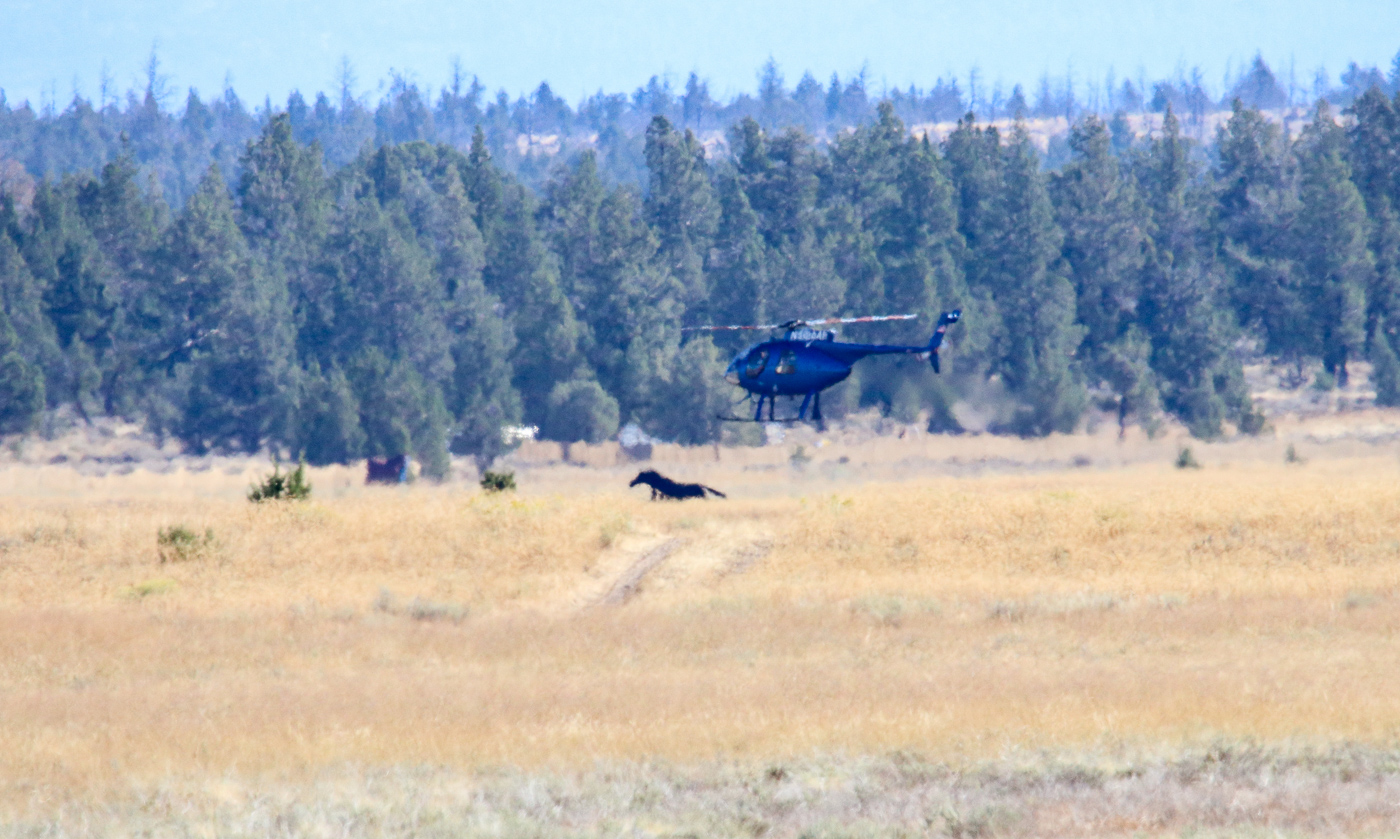
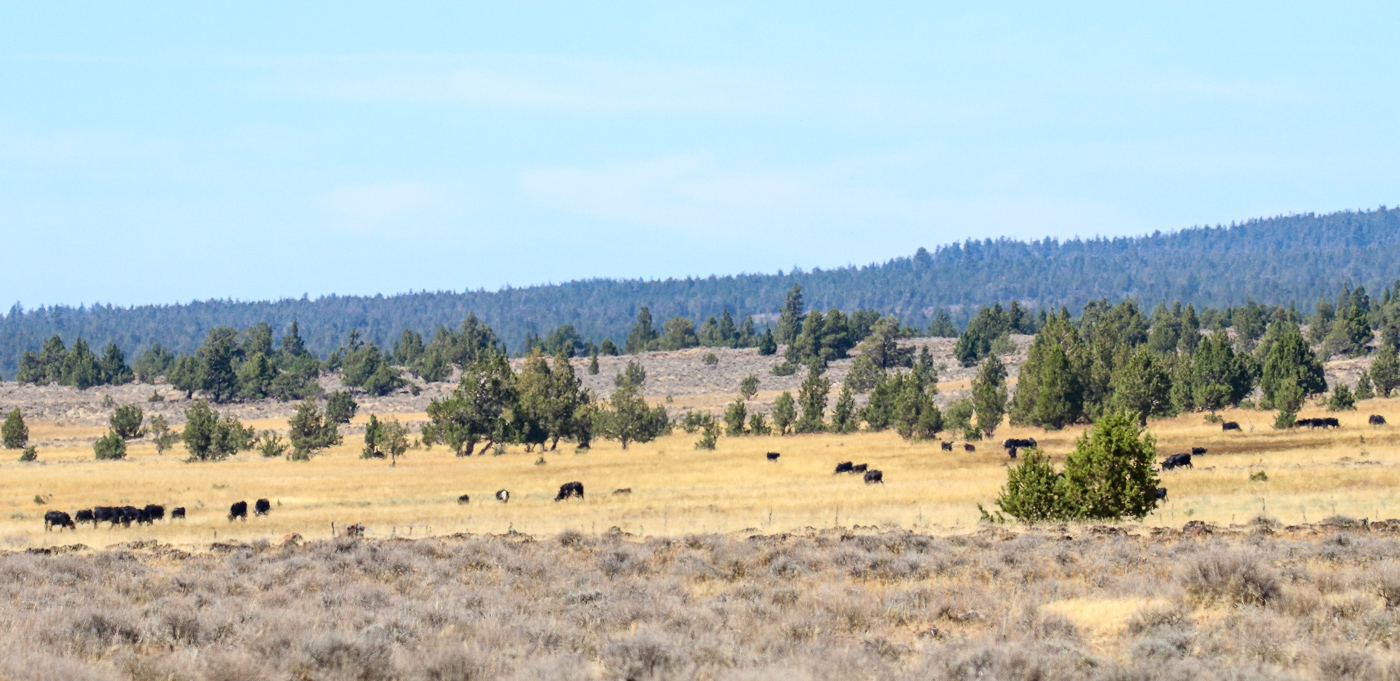
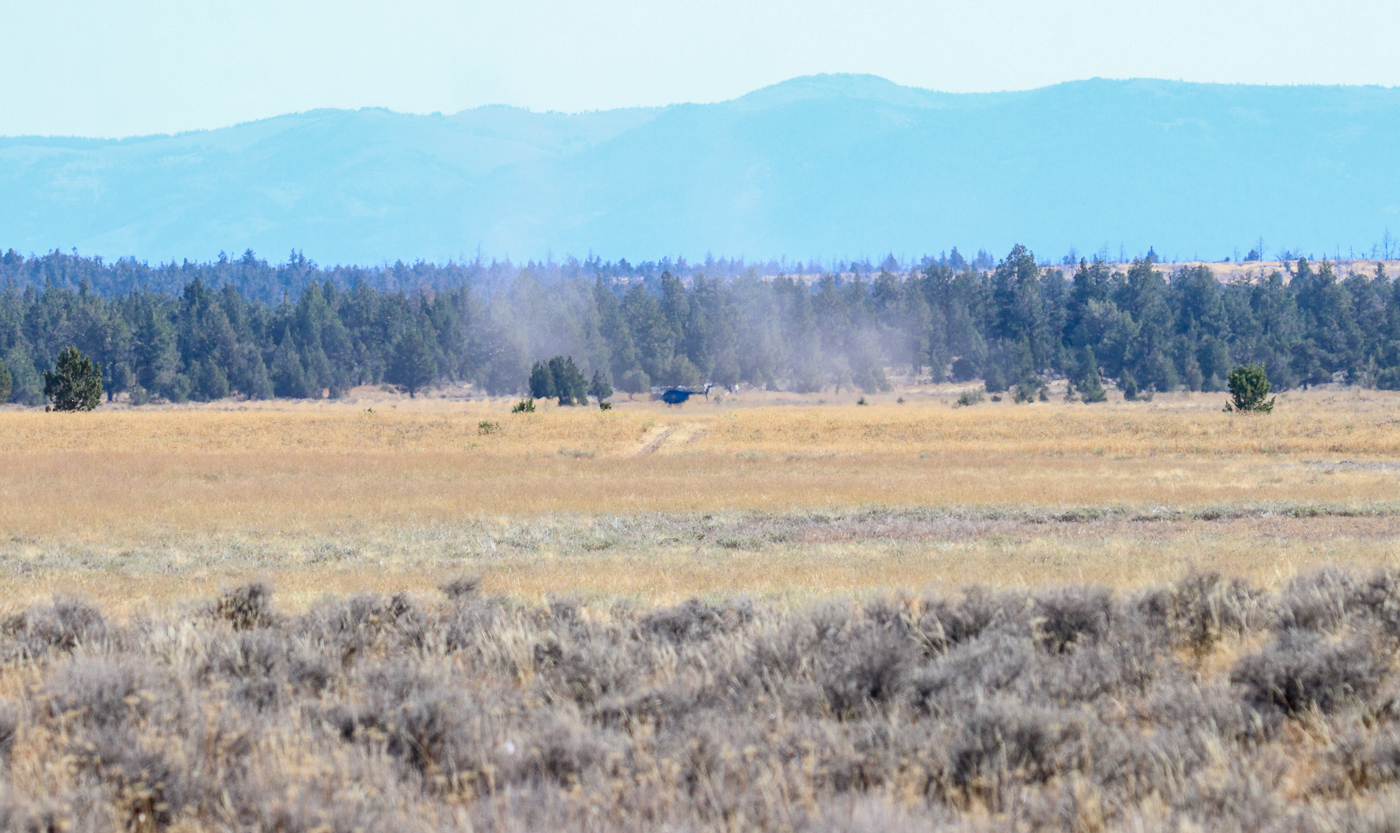
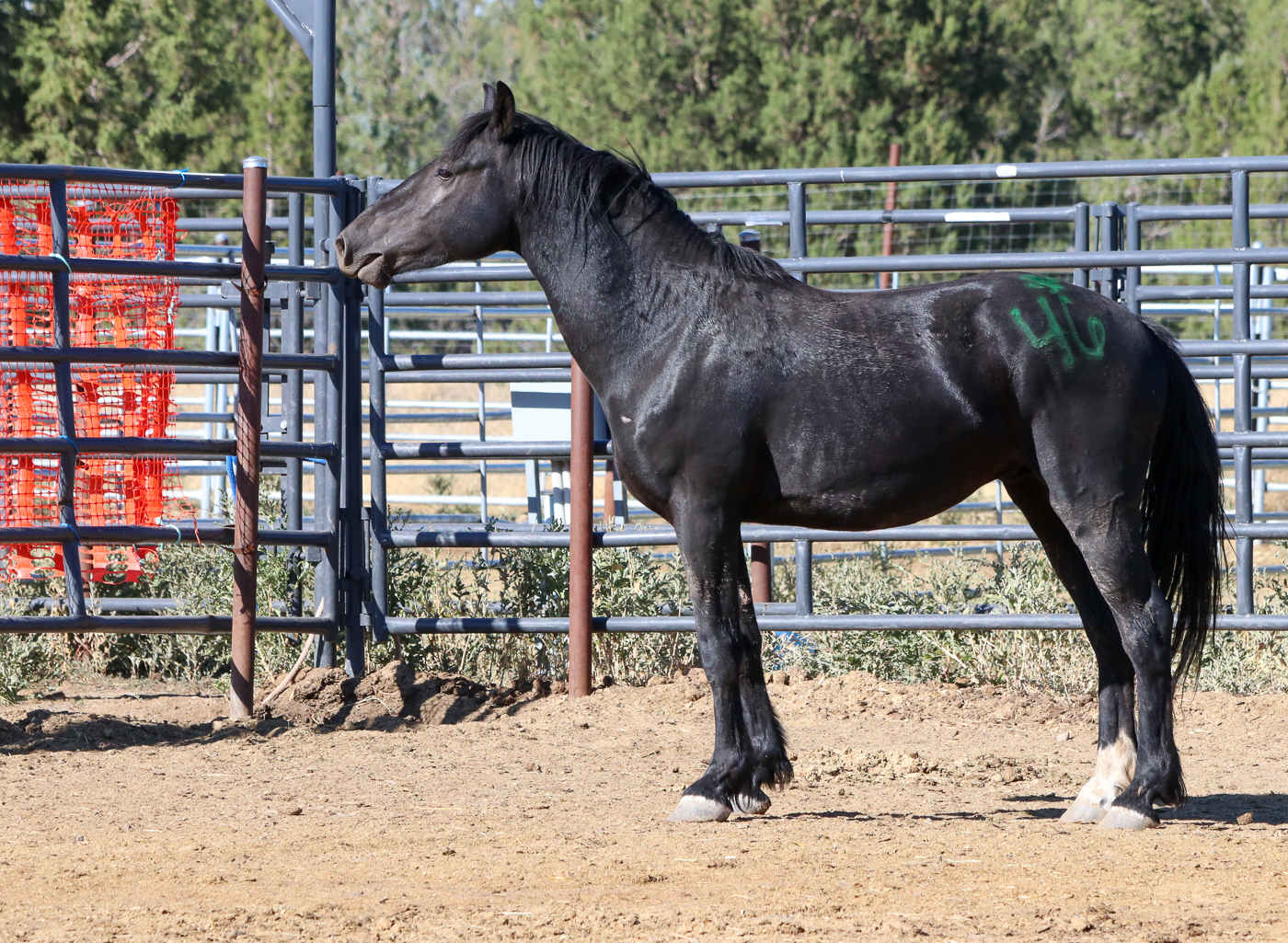
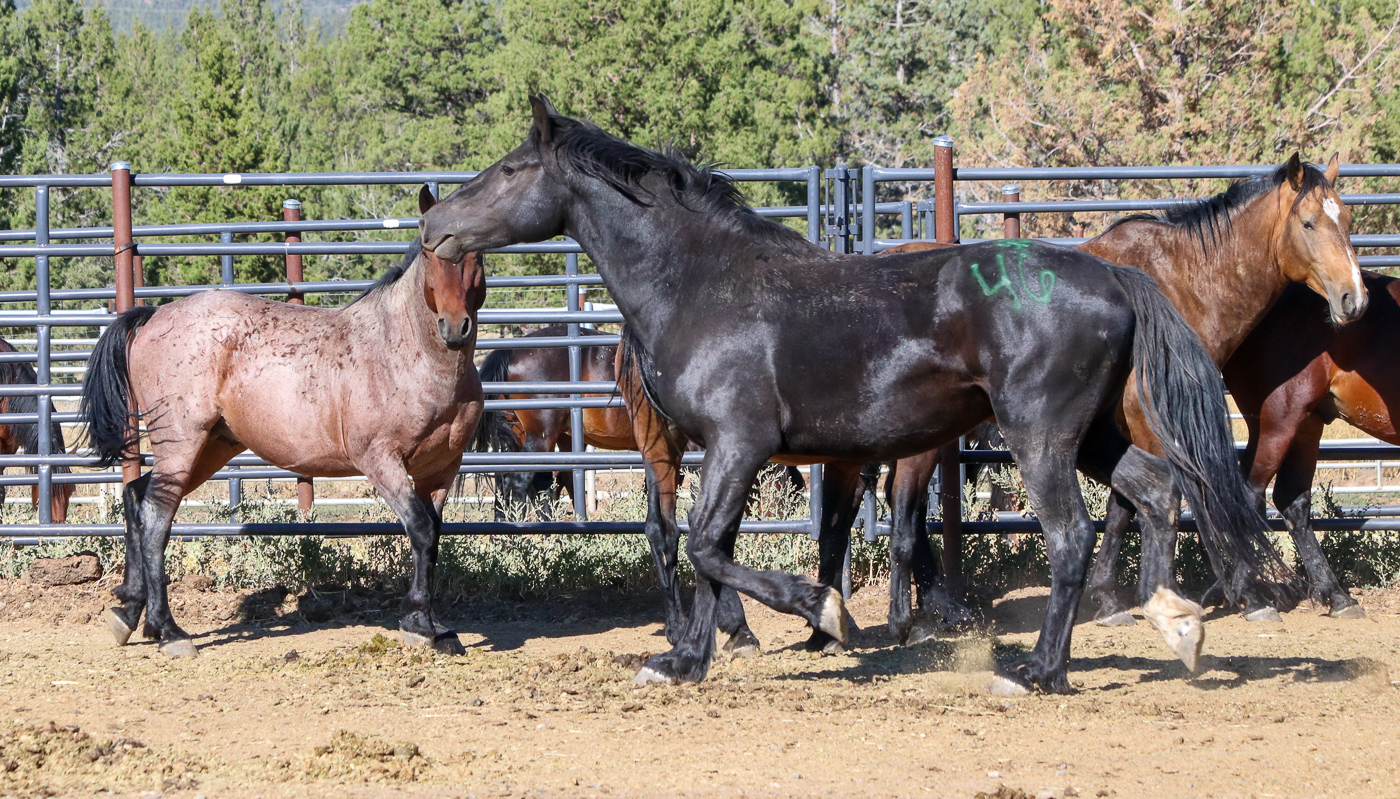
September 9, 2023: 10 Horses Captured
Today the trap site was moved to Logan Slough where 10 horses – four stallions, four mares, and two foals – lost their freedom and families.
The two AWHC representatives were the only public observers. The observation site was located under a stand of trees about 1½ miles from the trap site that was hidden in the forest.
Although it afforded a very distant view of the helicopter pushing the horses along across the lava-strewn plateau, the trap wings and trap pen were not visible.
The helicopter was flying by 8:00 a.m., and the operation was called at 1:00 p.m. after making two runs and scouting the area for several hours. The first run began at about 9:15 a.m. Shortly after, four horses came galloping out of the tree line east of the trap site, with the helicopter flying above them. Within 10 minutes, it pushed them into the trap pen without any resistance.
At 11:40 a.m., during the second run, the helicopter brought in a band of five or six horses from the west side of the trap. This time, however, it appeared one of the horses veered off. For several minutes, we saw a dark bay desperately trying to evade capture, circling in front of the trap with the helicopter in close pursuit. Because of the distance, we could only see clouds of dust from the helicopter and could not determine whether the horse was captured. The helicopter spent the next hour in the air, perhaps scouting for more horses, before finally landing for the day.
Although the USFS allowed us to view the horses at the Double Devil Wild Horse Corrals, as in the past week, we were not able to see the horses being handled in the trap pen, loaded in the trailers, or sorted at the corrals. All the horses removed today were in excellent shape with body condition scores of 5.
As is the protocol at the corrals, stallions are immediately separated from mares and mares from their foals. In past years, Logan Slough has been a frequent location for trapping with 42 horses being captured in one day in 2021. After six days, this year’s operation has also rounded up and removed 42 horses at three different trap locations across the Devil’s Garden Wild Horse Territory (Territory). Two reasons for this year’s lower numbers could be the horses learning how to evade the helicopter after five straight years of roundups or there being much fewer horses on the Territory than the 1,339 horses listed in this spring’s census.
AWHC is waiting for confirmation from the USFS, but we estimated that there are ~ 15 mare/foals, 15-20 yearlings, and ~15 older geldings from the 2022 roundup and removal as well as several horses from the McGavin Peak Wild Horse Territory available for adoption at the Double Devil Wild Horse Corrals. For more information, visit https://www.fs.usda.gov/modoc
September 8, 2023:
4 Horses Removed
For the third day this week, the trap site was located near the Big Sage Reservoir where four horses – two bay stallions and a buckskin mare and her foal – were captured. The trap site and observation site were located in the same place as the last two days.
Just before 8:00 am, we saw the helicopter flying over the forest about five miles southeast of the trap site then loop north and disappear. After an hour, it returned and appeared to be working horses in the same area where it found horses on Wednesday and Thursday.
At 9:45 am, a band of four horses came galloping out of the trees and into the wings of the trap. The helicopter stopped to refuel shortly afterward, but the operation was called at 10:25 am.
At the Double Devil Wild Horse Corrals, the two bay stallions were sorted into a pen with the other stallions who were captured this week. Like the two other mares and foals rounded up at the Goose Lake trap site, the buckskin mare and her foal were separated and placed into different pens that were next to each other. While the mare stood quietly nearby, the foal paced up and down, occasionally poking his/her head between the pens trying to reach the mare.
All of today’s horses were in excellent condition, with body scores between 4 and 6.
To date, 26 horses – 10 stallions, 13 mares, and 3 foals – have been rounded up and removed by helicopter, and 4 stallions were captured yesterday in a bait trap. Two additional bait traps will be set up and monitored by cameras.
The USFS claims the 258,000-acre Devil’s Garden Wild Horse Territory is overpopulated with wild horses. However, after spending hours driving around looking for horses on the Territory before and during the roundup operation, today was the first day the AWHC representative found some – two small bands peacefully grazing many miles away from this week’s trap sites.
September 7, 2023 - No Horses Captured
For the second day this week, no wild horses were rounded up and removed.
Once again, the trap site was located near the Big Sage Reservoir, and the observation site was in the same place as yesterday -- about 1,500 feet from the trap site in a stand of trees.
The AWHC representative was the only public observer.
The helicopter was up in the air by 8:00 am, and, after almost 5 ½ hours of flying, the operation was called around 1:15 pm. During that time, the helicopter made multiple passes over the forest and ridge south of the trap site, returning frequently to the area where the 10 horses who were captured yesterday were pushed out of the forest and into the trap wings. Twice this morning and early afternoon, the Judas horse was led out, suggesting that the helicopter had indeed found more horses and that it would soon be driving them out from the safety of the trees.
However, no horses appeared. Because the forest obscured the view, it was not possible to see how the horses evaded the helicopter.
September 6, 2023 – 10 Horses Removed
Today the trap site was moved to the Big Sage Reservoir.
In addition to the AWHC representative, three other members of the public came to observe.
The observation site was located about 1,500 feet from the trap site in a stand of trees. While it offered a good view of the helicopter moving the horses across an open expanse of the plateau and into the wings of the trap, the trap pen was mostly hidden by a stand of trees.
The helicopter made two runs. The first one began at 9:15 am. For the next ½ hour, the helicopter could be seen flying east then south of the trap, sometimes disappearing behind the tops of the trees.
At 10:10 am, it drove six horses out of the forest, across the plateau, and into the trap wings and pen.
The helicopter stopped to refuel and pick up a spotter before it began the second run at around 11:00 am. After flying north of the trap site for about 45 minutes, it looped around and headed in the same direction as in the first run. By 12:45 p.m., it pushed a group of four horses out of the trees in the same place as the previous run and into the trap pen.
Although the helicopter refueled and took off again at 1:10 pm, no horses were found, and the operation was called at 3:00 pm.
Because of the heavily forested area, it was not possible to see how far the horses were driven before reaching the trap pen. However, a reasonable estimate would to be three to four miles.
Immediately after each run, the horses were loaded into trailers and transported to the USFS’s Double Devil Wild Horse Corral where they were processed, and the mares and stallions were separated into different pens. All today's horses, including bays as well as grey and red roans, were in good or excellent condition, but very skittish. To distinguish what trap site the horses are being captured at, the USFS is spray painting large orange numbers on their backs: #5 for horses caught at Goose Lake on Monday, and #32 for those captured at the Big Sage Reservoir today.
To date, 23 adult horses and 2 foals have been rounded up and removed.
September 5, 2023 – No Horses Captured
Once again, the trap site was located near Goose Lake, and the observation site was on the causeway.
Besides the AWHC representative, there was one other observer.
We arrived at the operation at 8:30 am and saw that the helicopter was already flying, most likely scouting for horses. One or two riders were also on the plateau along the tree line and near the wings of the trap.
At 9:20am, the helicopter landed to refuel then took off 20 minutes later; heading northeast, it found a band of four horses – most likely the same one that evaded capture yesterday. For almost an hour, the helicopter unsuccessfully tried to push the horses out from under the trees. Although difficult to see because of the distance and the dense forest, at one point it appeared that the four horses split, with two horses going in one direction and two in the other, but all returning to the safety of the trees.
After stopping to refuel at 11:10 am, the helicopter returned to its pursuit of the four horses. For another hour or so, the horses played hide and seek, moving from one stand of trees to another, avoiding capture for a second day. Finally, the helicopter backed off and flew southwest for several miles over a long ridge of trees, probably looking for more horses.
When the helicopter returned, the operation was called at 12:50pm.
Although we asked to visit the trap pen because it was not visible, the USFS did not allow it.
According to USFS, its goal was to remove 50 horses from this area because they were trespassing on private land. Tomorrow the trap site will be moved to another location – after capturing only 15 horses, six stallions, seven mares, and two foals, yesterday and no horses today.
The helicopter operation is expected to take 30 days. The USFS is also concurrently bait trapping, which could extend into the winter months.
Like yesterday, about 20-30 privately-owned cow/calf pairs were grazing on the plateau near the trap site.
September 4, 2023 – 15 Horses Captured
On the first day of the USFS 2023 roundup and removal on the Devil’s Garden Wild Horse Territory (Territory) on the Modoc National Forest, 15 horses, including two foals, lost their freedom and families.
Cattoor Livestock Roundup, Inc. is the contractor.
The trap site was set up near Goose Lake, which is in the northeast corner of the Territory; the observation site was located on a causeway across the lake and about 13/4 miles from the trap site. While it afforded a distant view of the helicopter pushing the horses along a tree line and across the plateau, the trap wings and pen were fairly obscured, making it difficult to see the condition of the horses as they entered the pen or how they were handled once in it. Also, because of the heavily forested area, it was not possible to see how far the horses were chased before reaching the trap pen.
At 9:15 am, the helicopter was seen flying over the forest to the west of the trap site. Several minutes later, it appeared driving a large group of horses across the plateau and toward the trap, but they escaped into the trees.
Fifteen minutes later, however, the helicopter found another band of horses, and at 10:15 am, four adult horses and two foals were captured.
At about 10:45 am, the helicopter took off again and headed west over the forest, apparently scouting for horses. Almost an hour later, a band of nine horses appeared out of the tree line, with the helicopter flying low and close behind. For almost ½ hour, the helicopter chased them as their bay stallion tried to lead them away from the trap site. Eventually, the helicopter drove all of them into the wings of the trap, but the band escaped by jumping over the jute fencing.
Once again, the helicopter began pursuing them. The stallion valiantly charged toward it several times in an attempt to help his band evade capture. This continued for over 15 minutes, with the horses veering off in different directions, sometimes galloping and sometimes trotting. Unfortunately, their luck ran out, and they were finally driven into the trap pen.
The helicopter made a number of passes over the forest north of the trap site and found no horses. The operation was called at 1:30 p.m.
Twenty to thirty privately owned cow/calf pairs were in the direct path of the helicopter as it chased the horses toward the trap pen. Eventually, they moved to another part of the plateau.
Besides the AWHC representative, one other member of the public came to observe.
After the operation, the USFS allowed viewing of the horses at its Double Devil Wild Horse Corrals. Water and hay were plentiful, and the pens were large. While the mares were somewhat settled, the stallions were skittish. All are in good to excellent shape, with body condition scores ranging from 4-6. Like last year, the stallions are quite impressive with their muscular necks and sheer size.
There were no reported deaths or injuries.

